
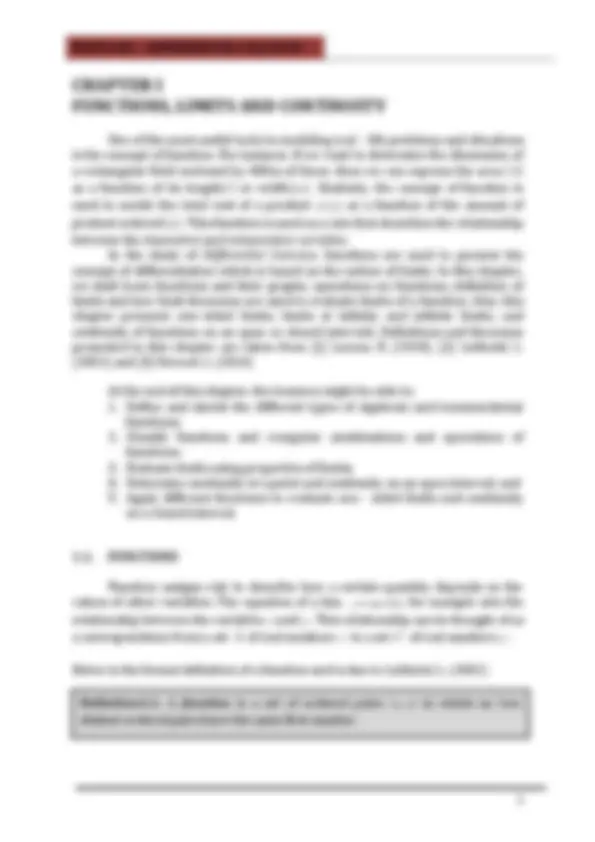
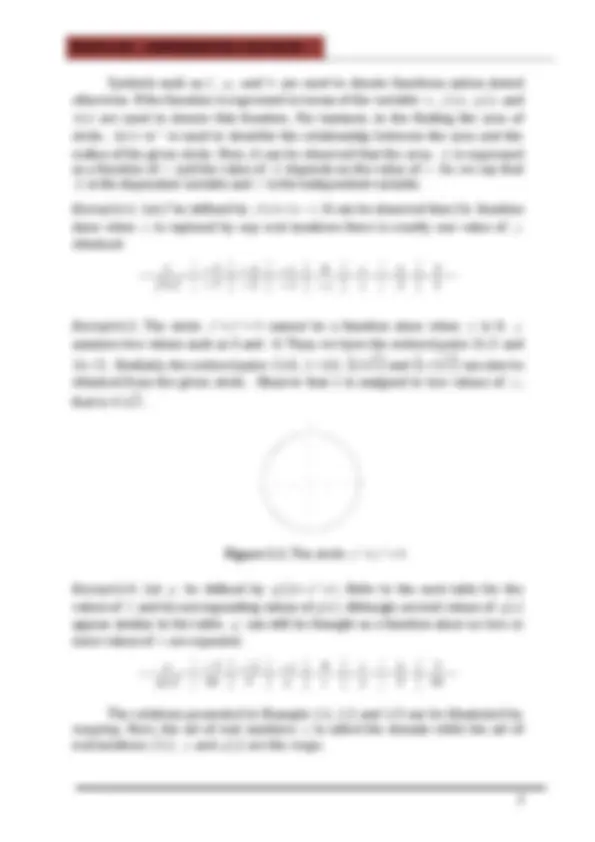

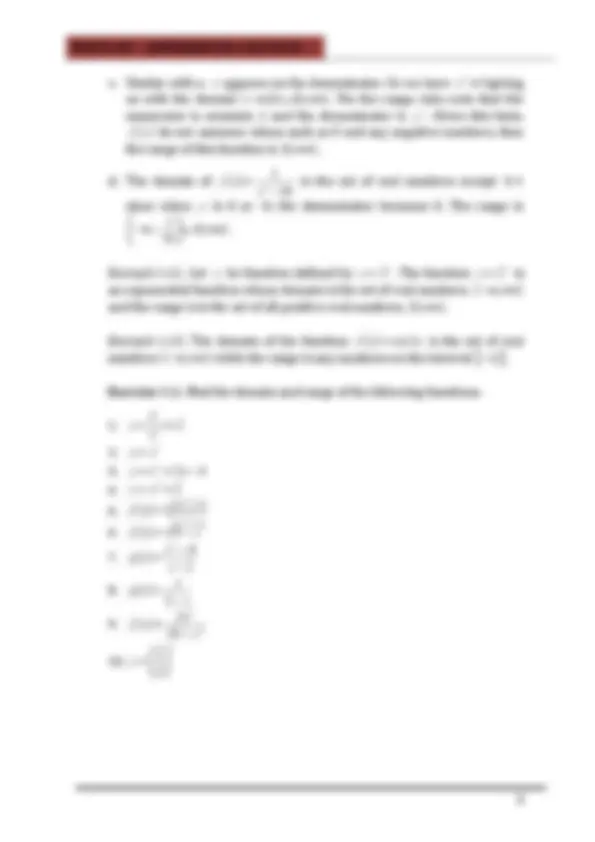
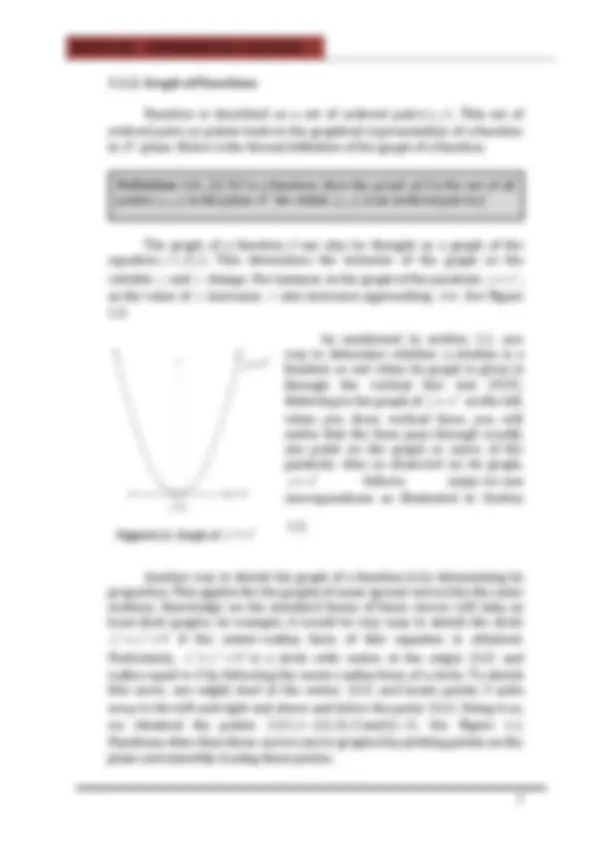
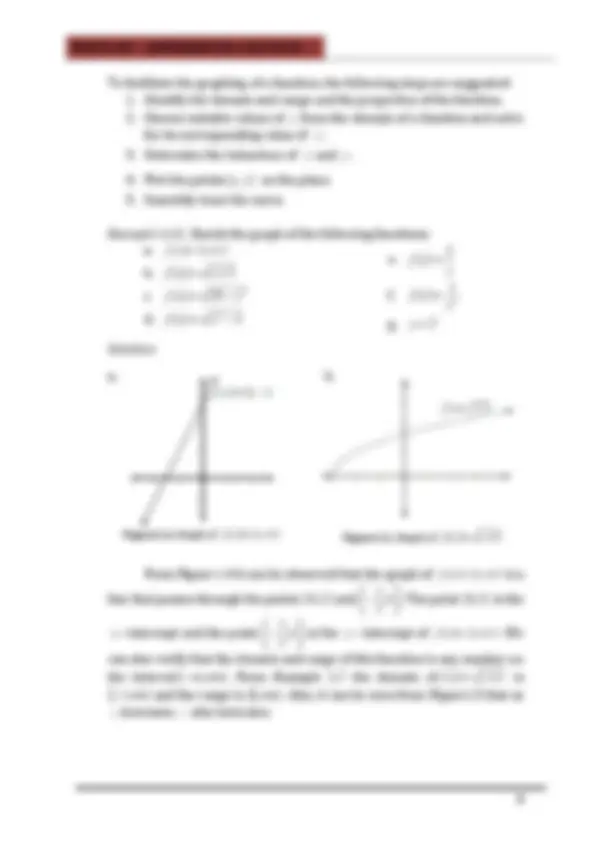
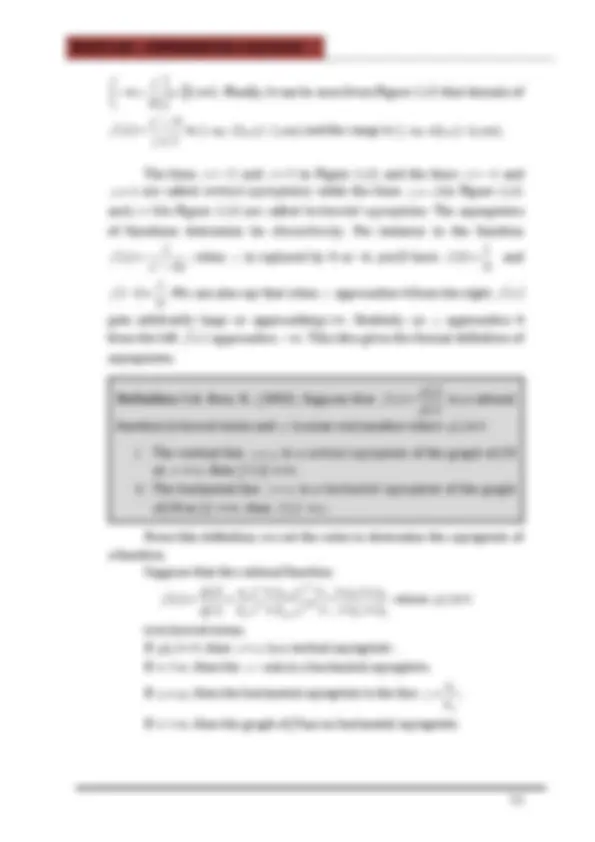
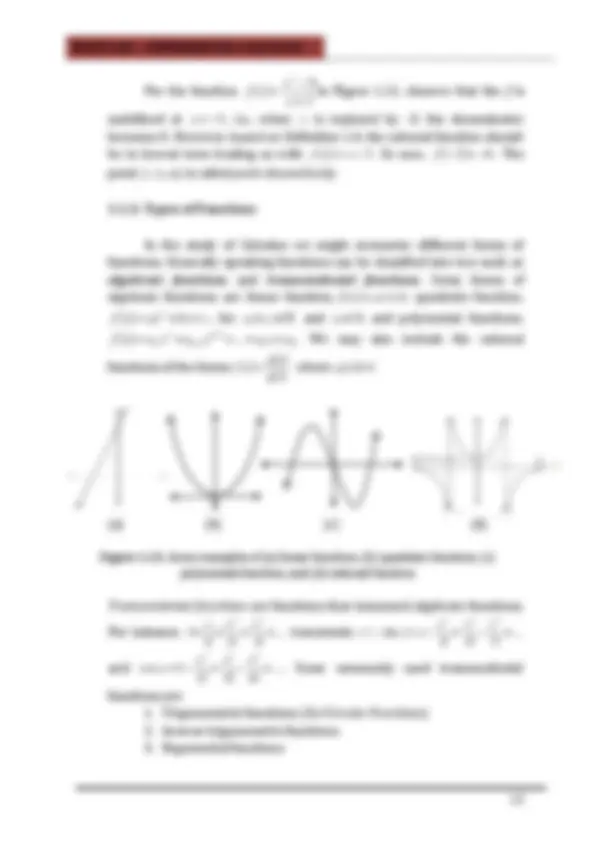
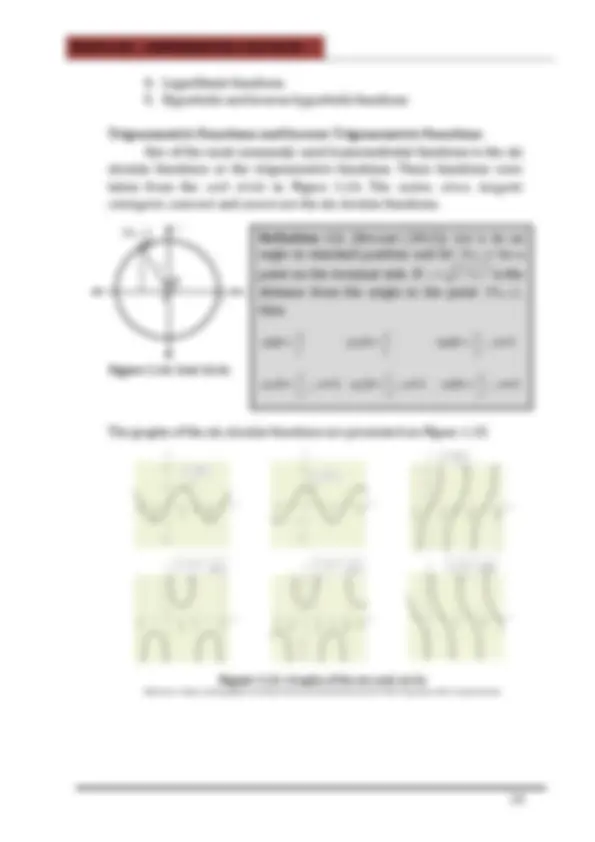
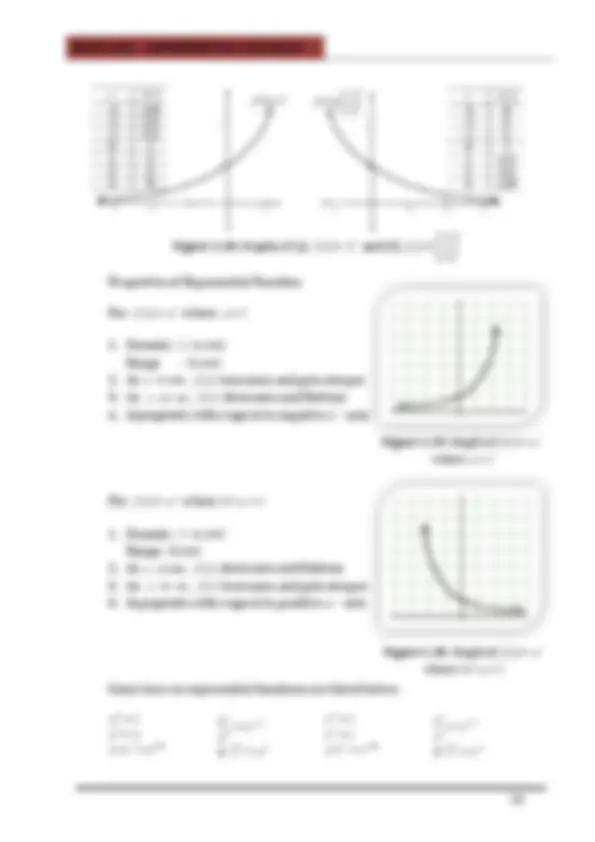
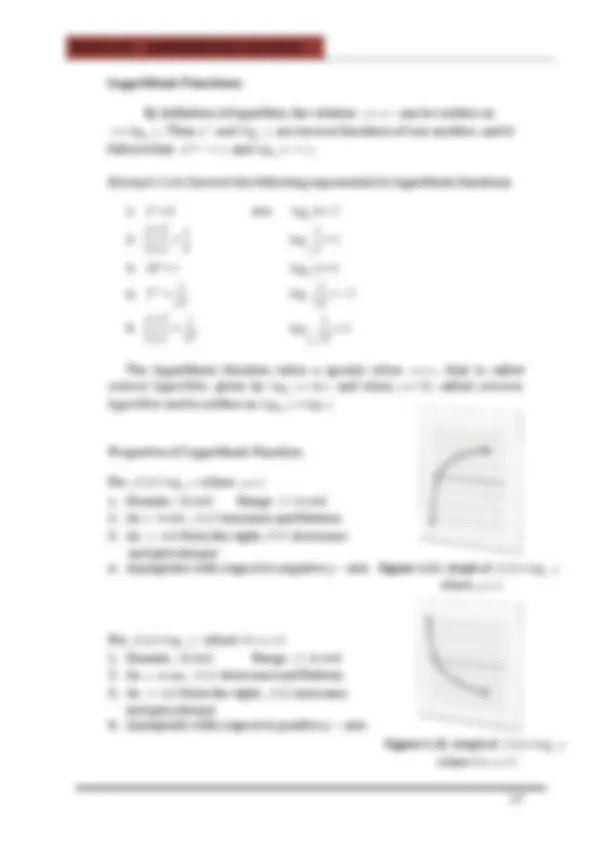
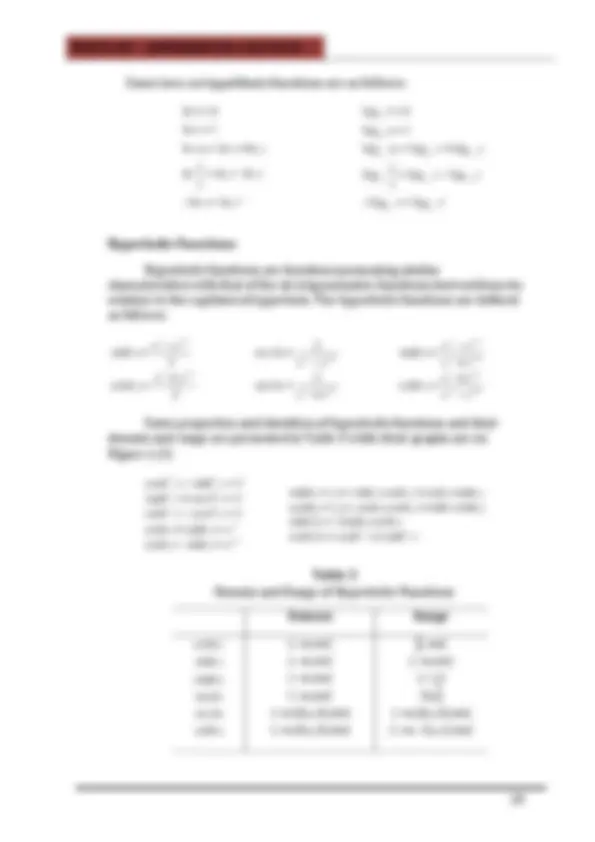
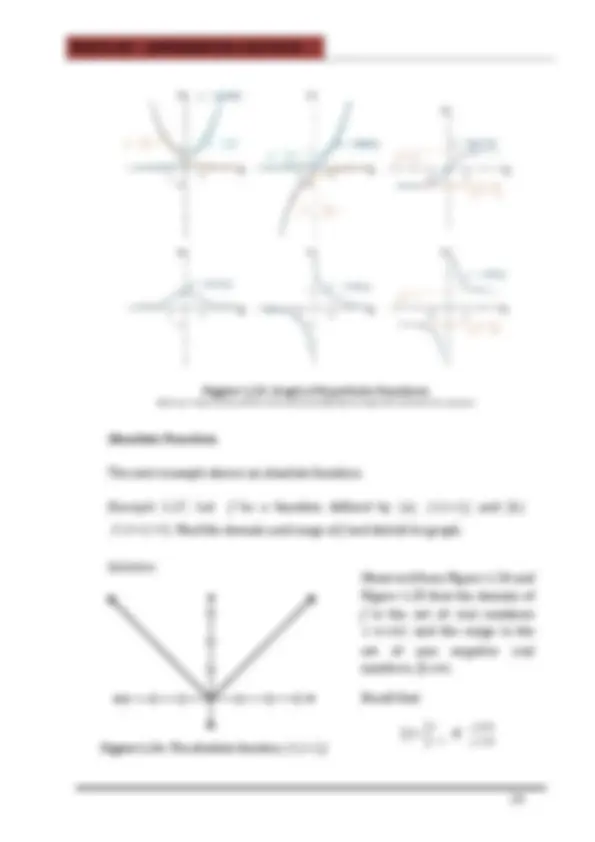
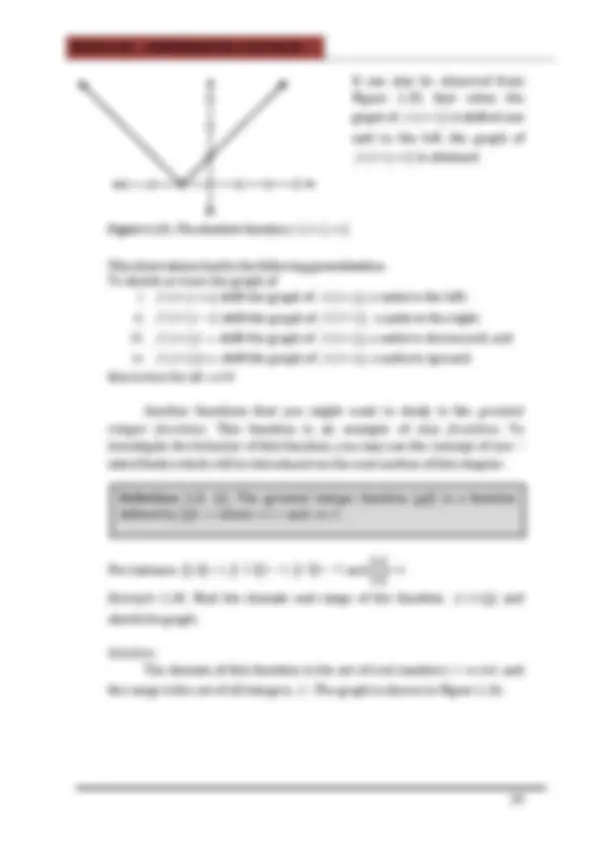
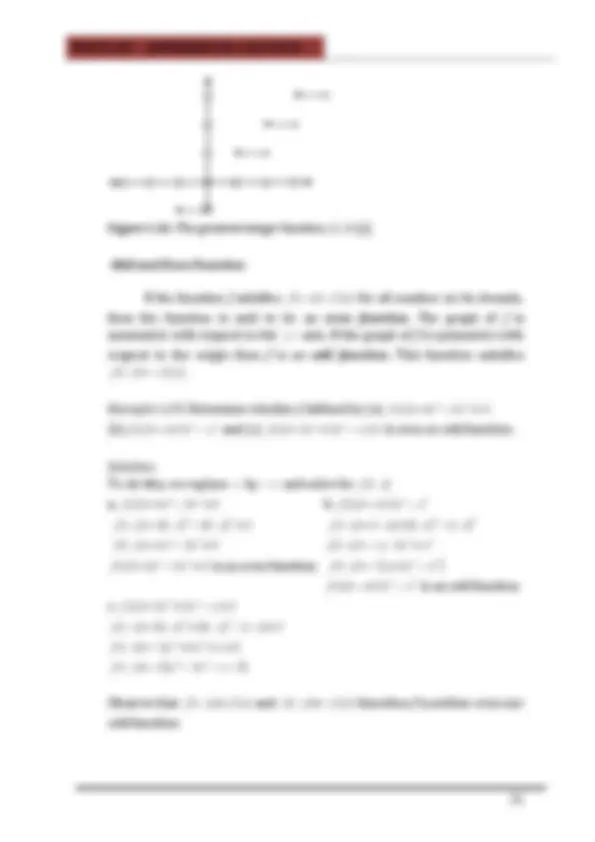
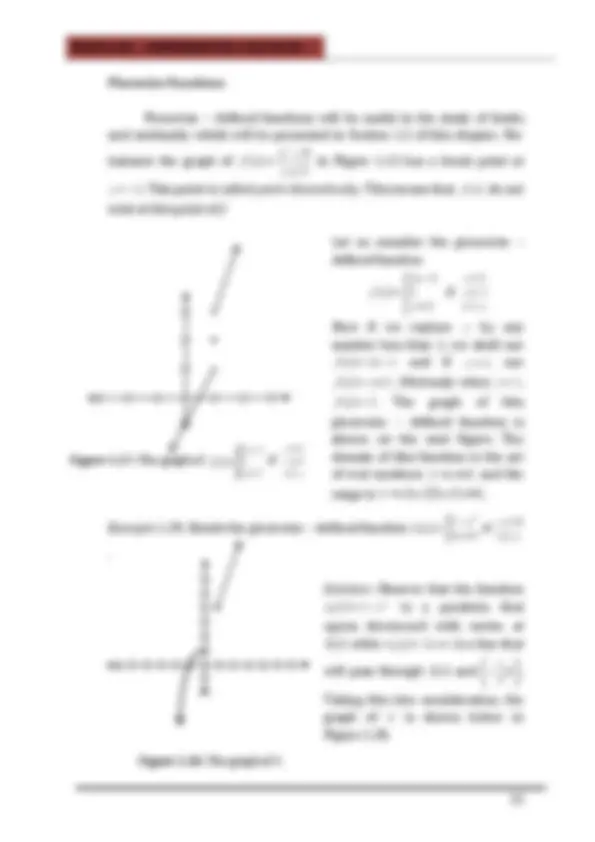
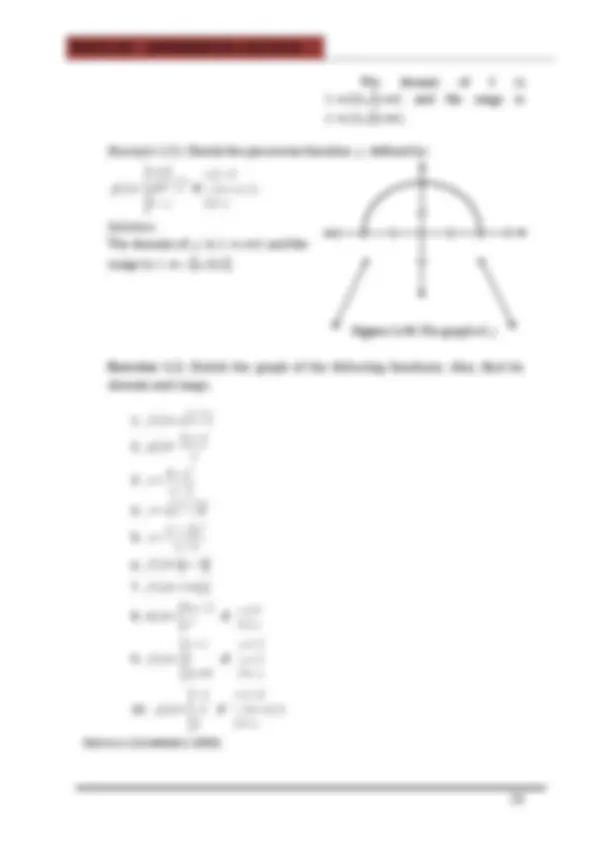
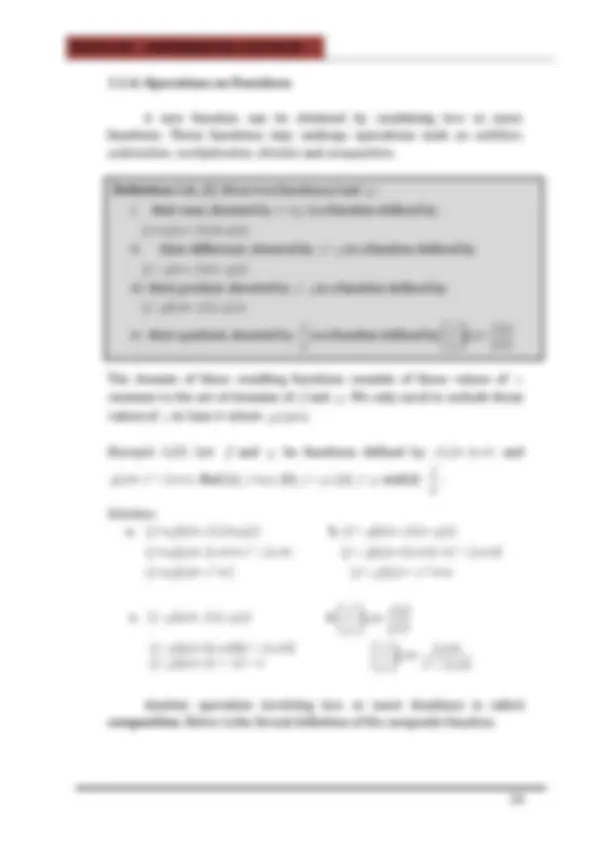
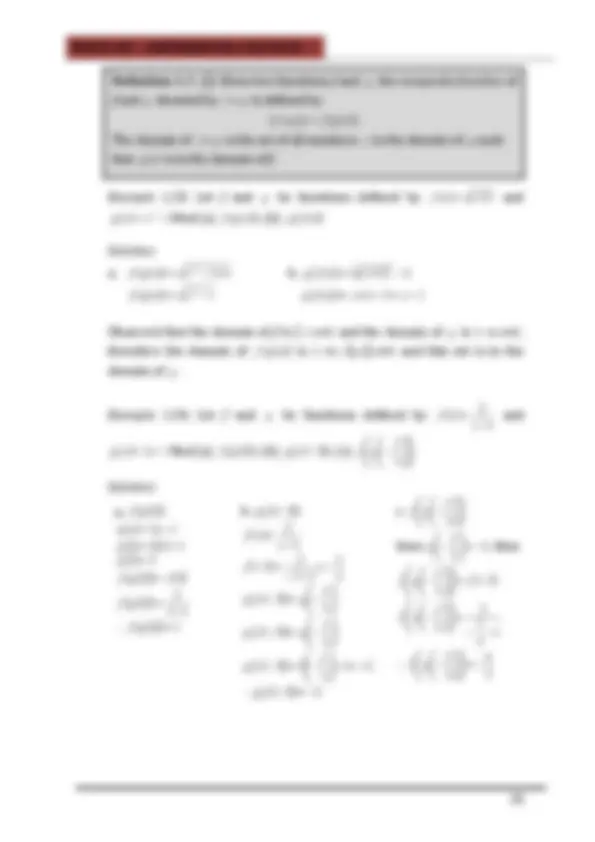
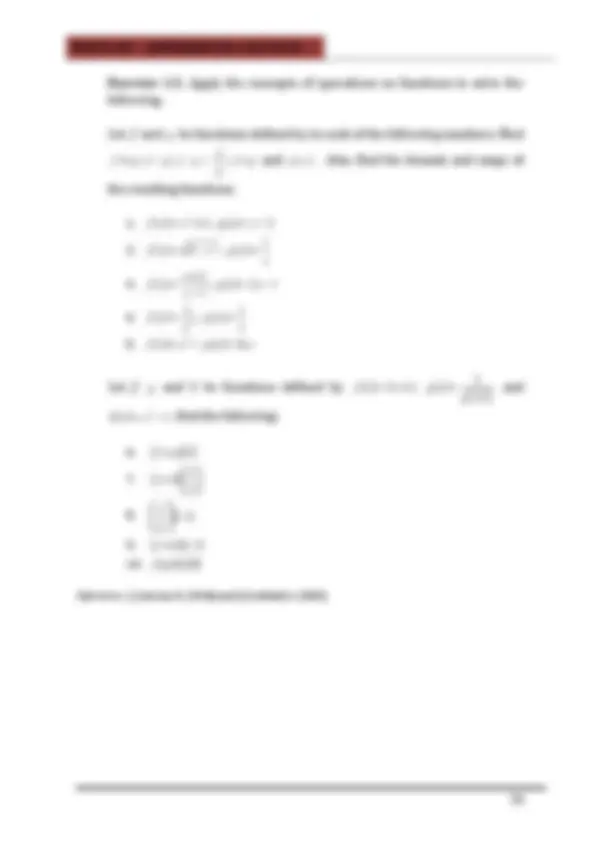
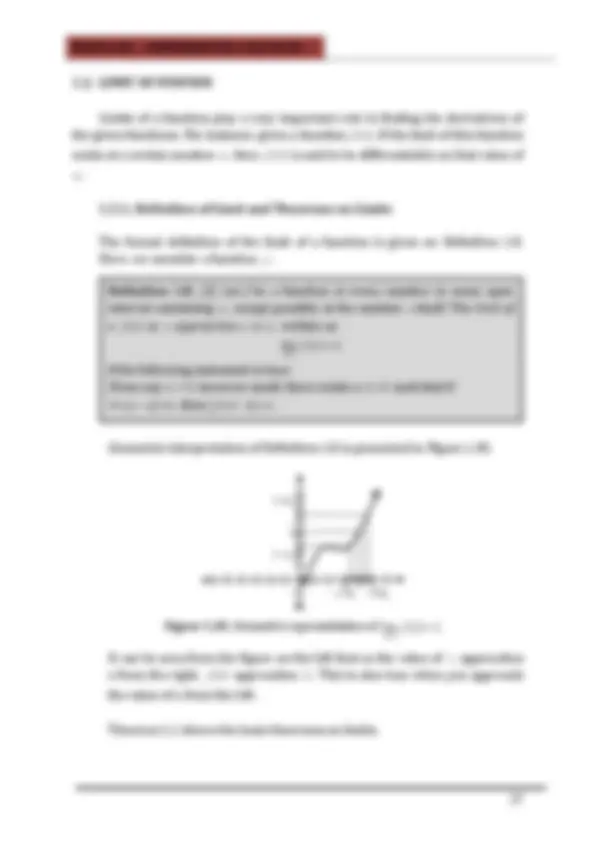
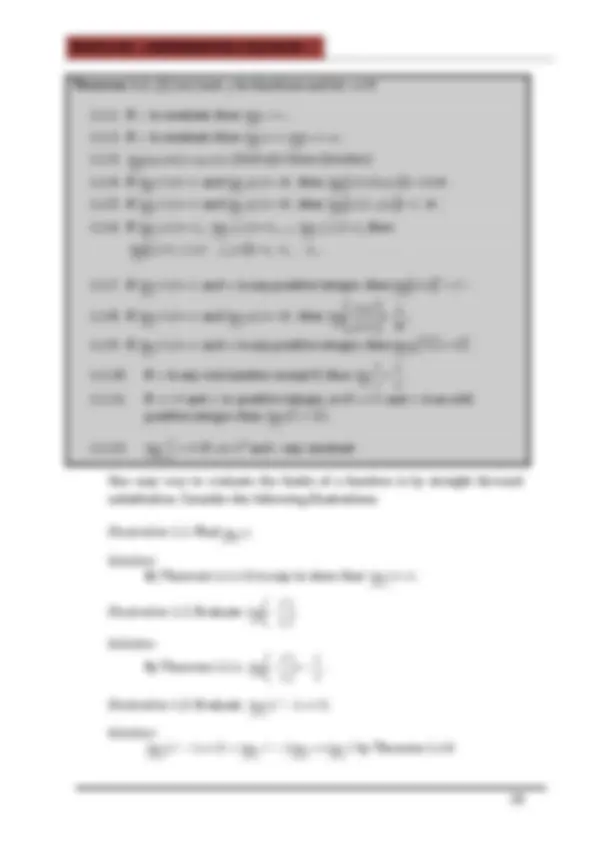
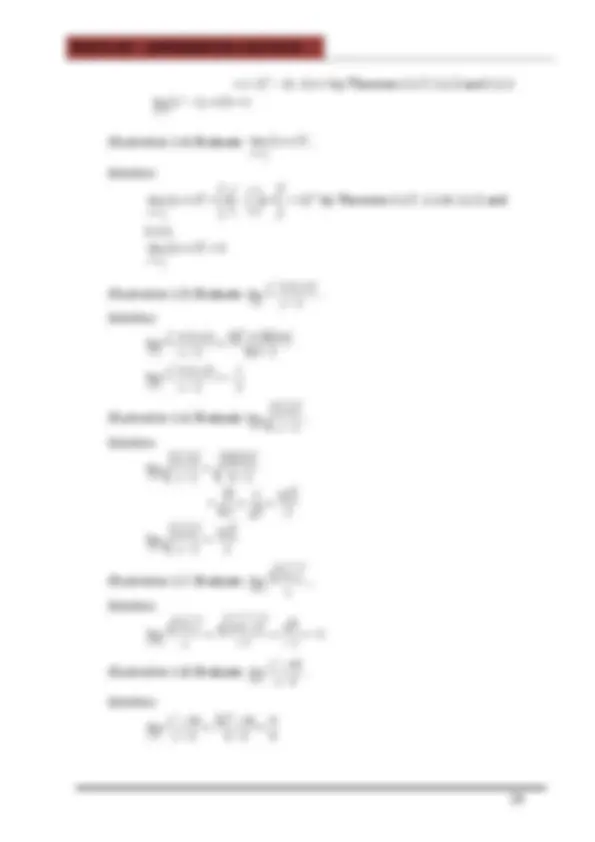
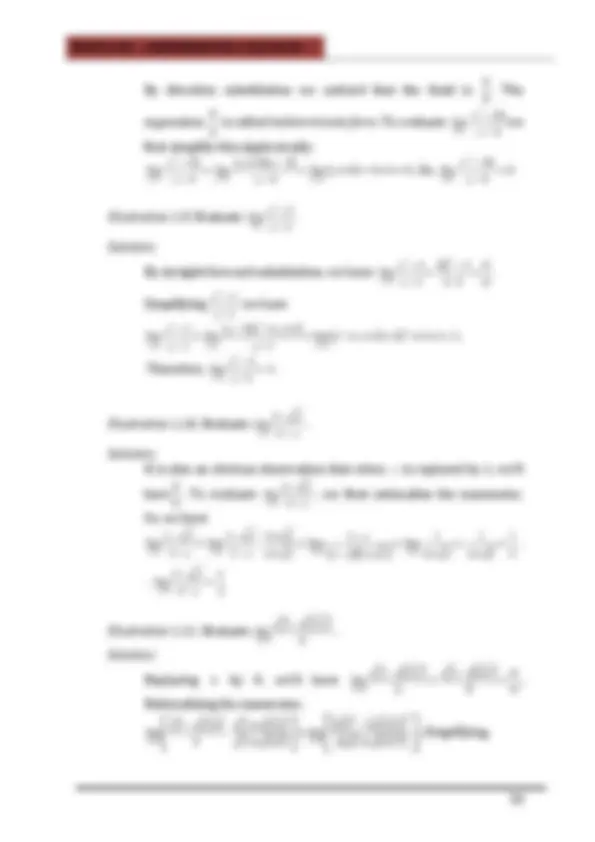
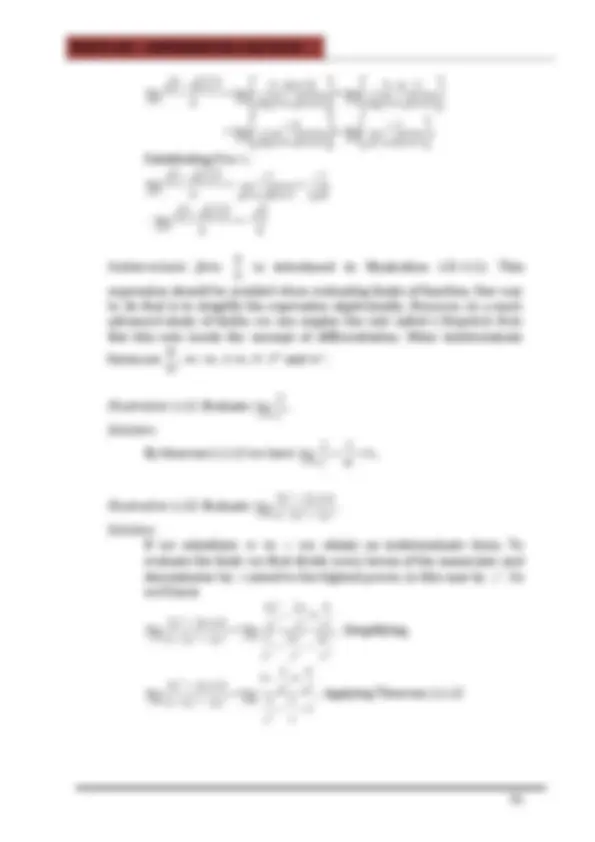
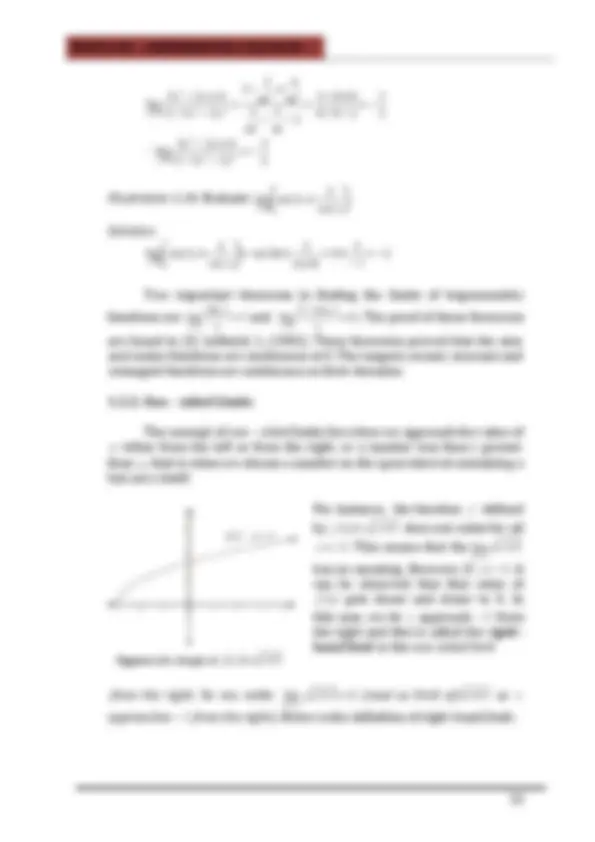
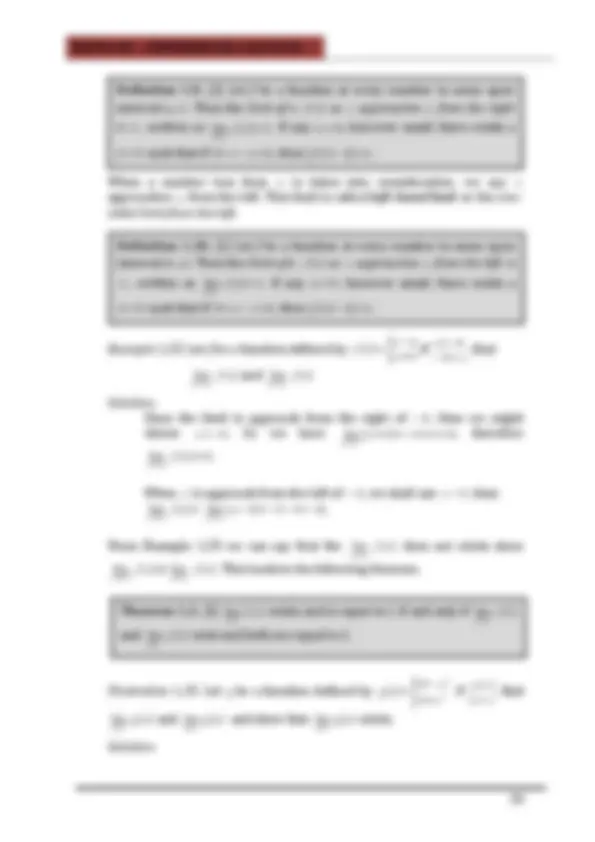
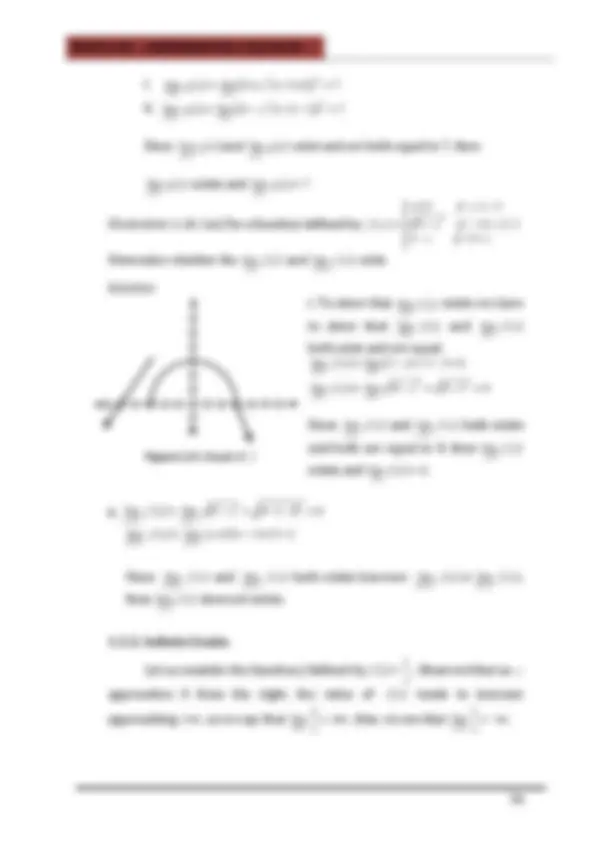
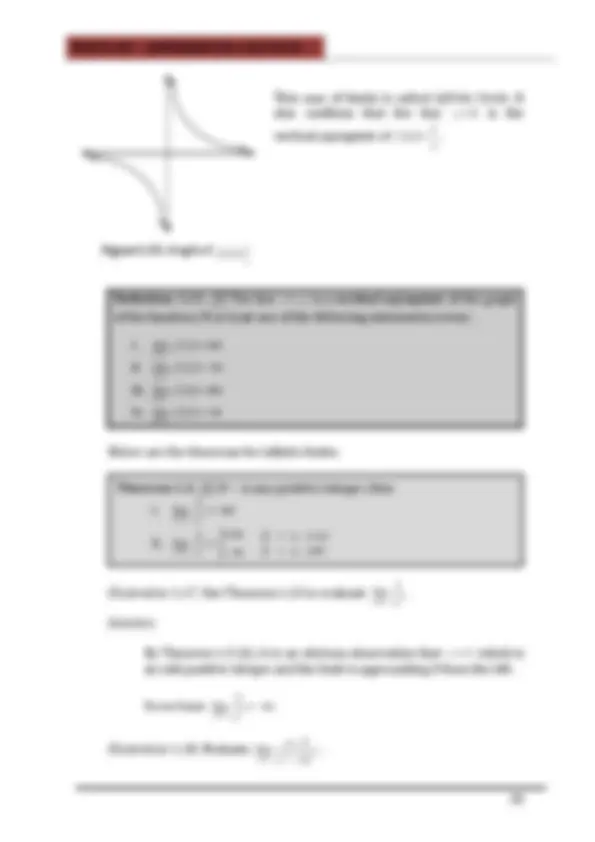
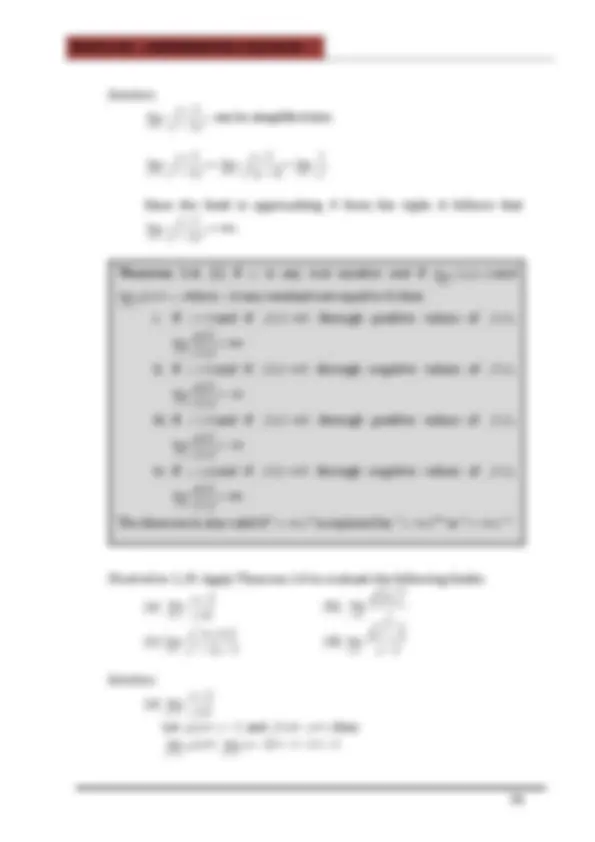
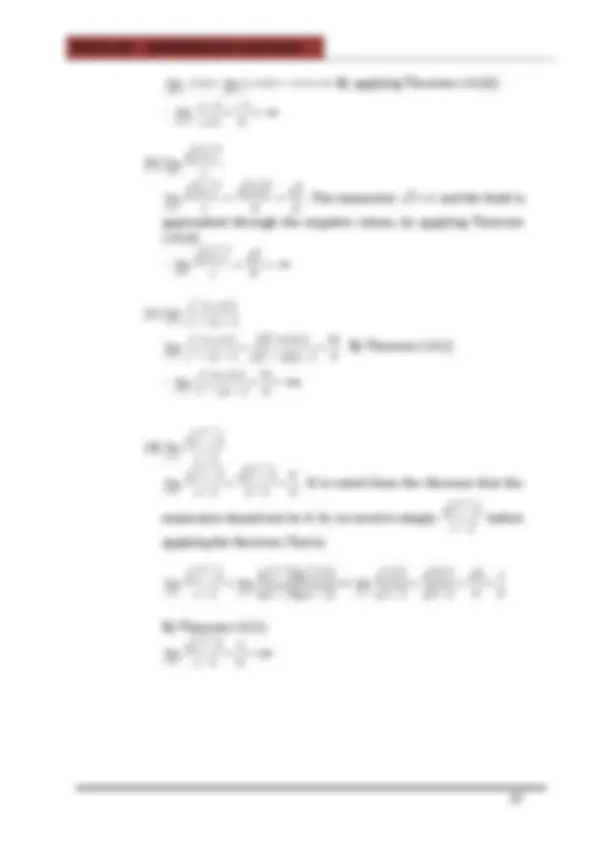
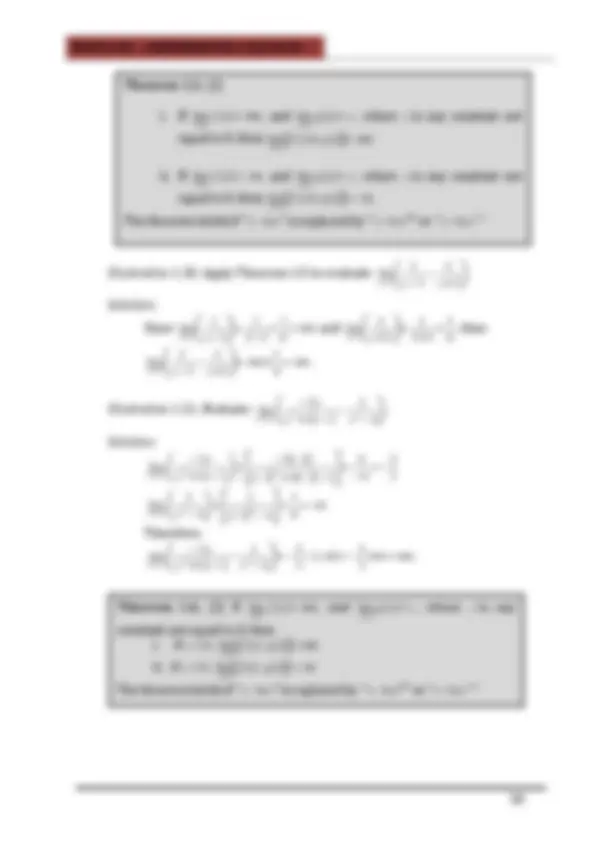
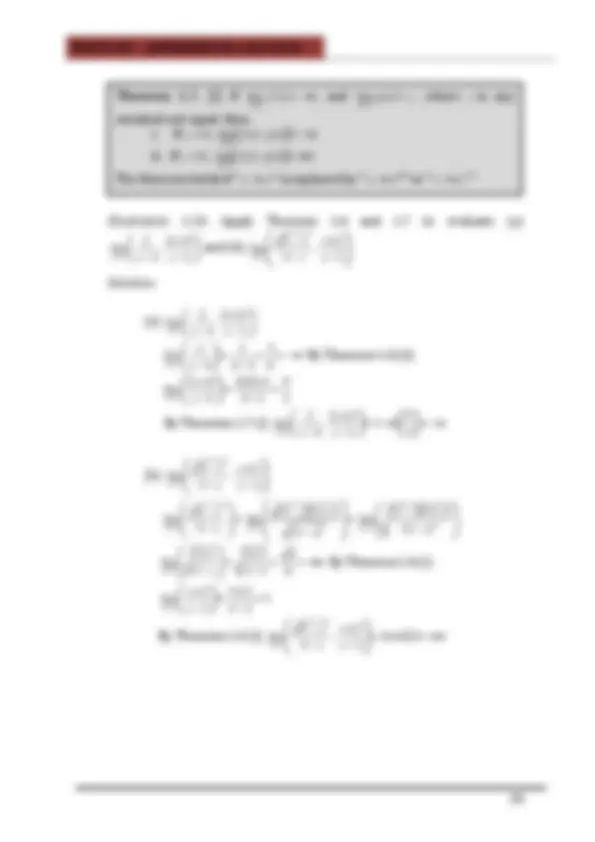
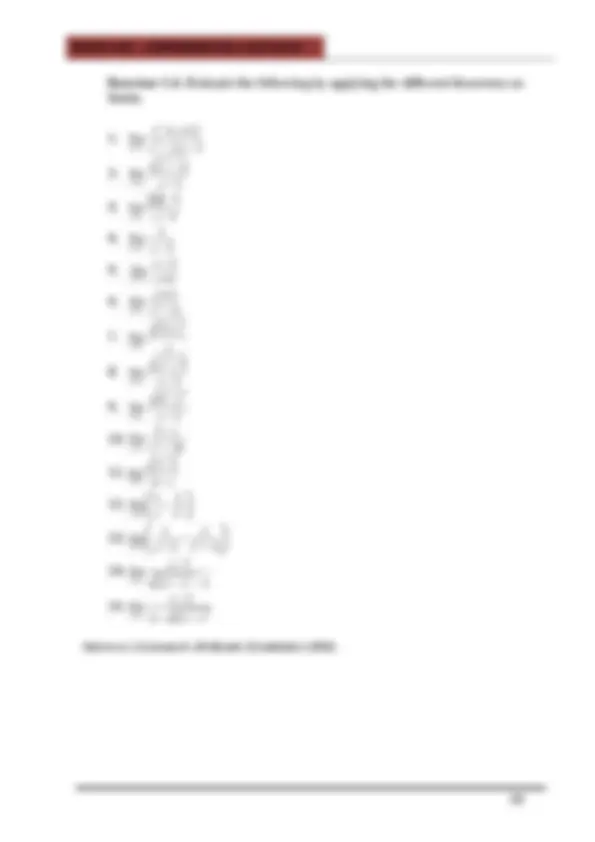
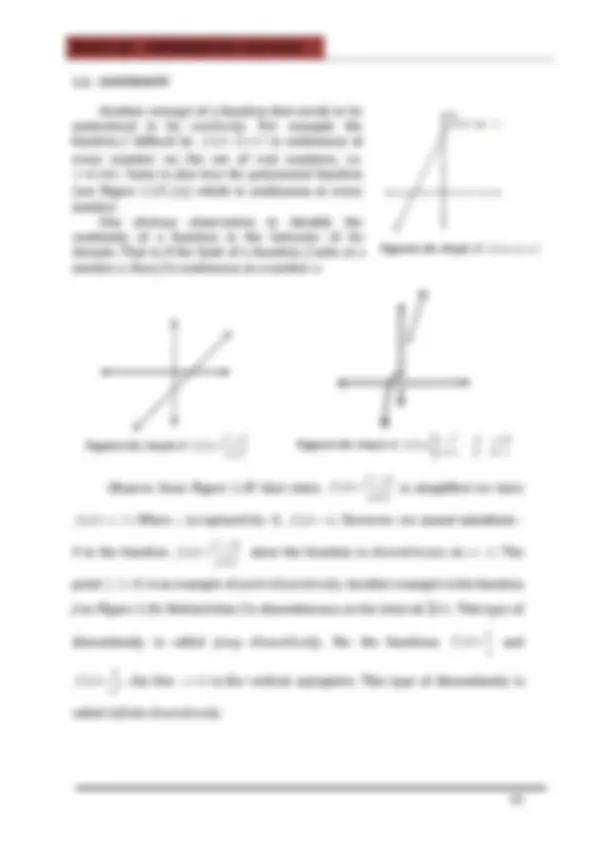
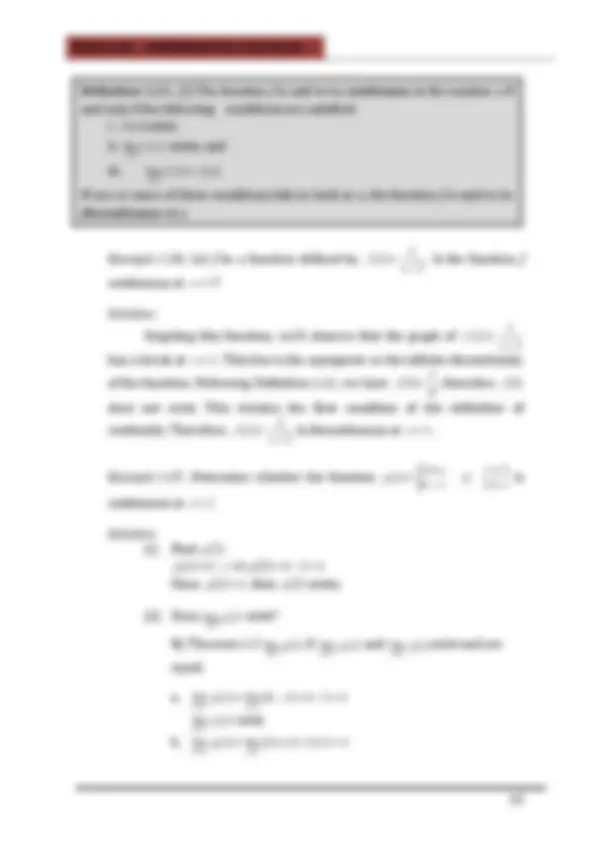
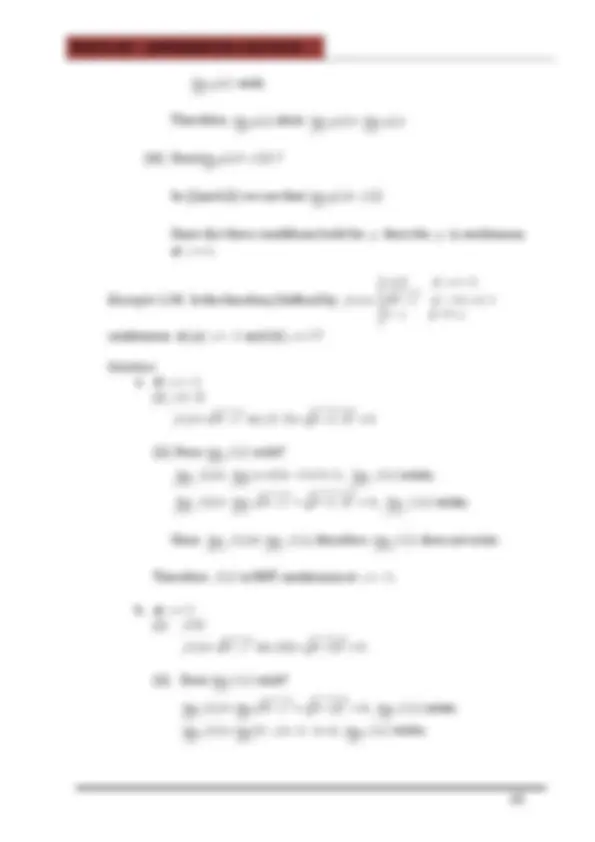
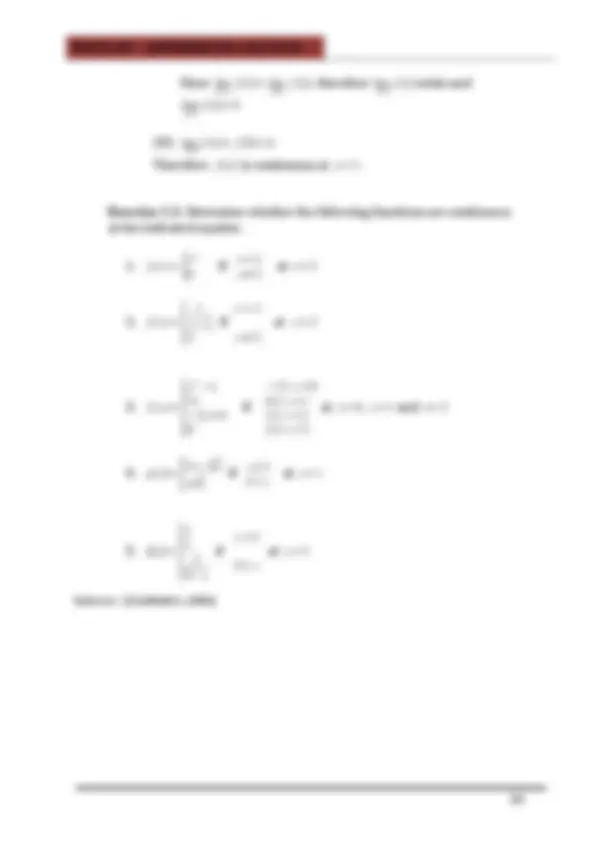
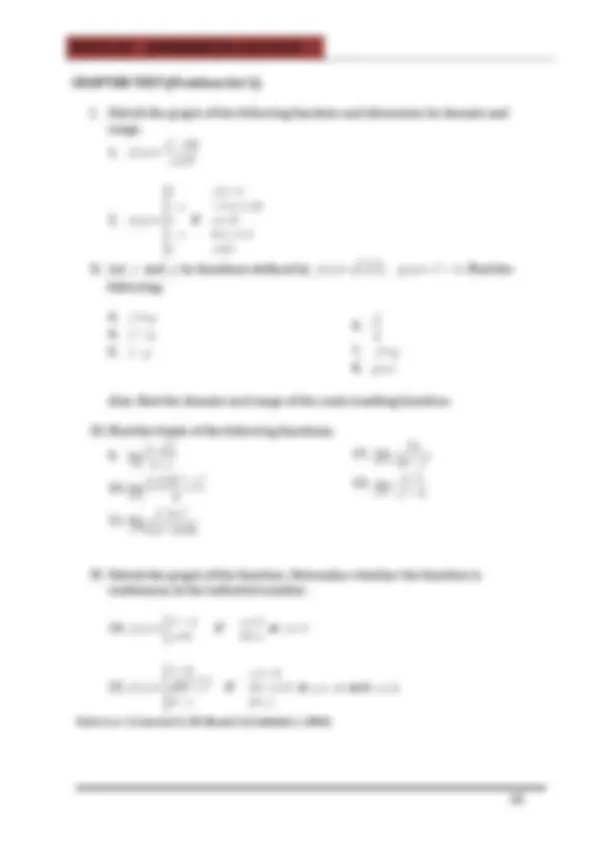
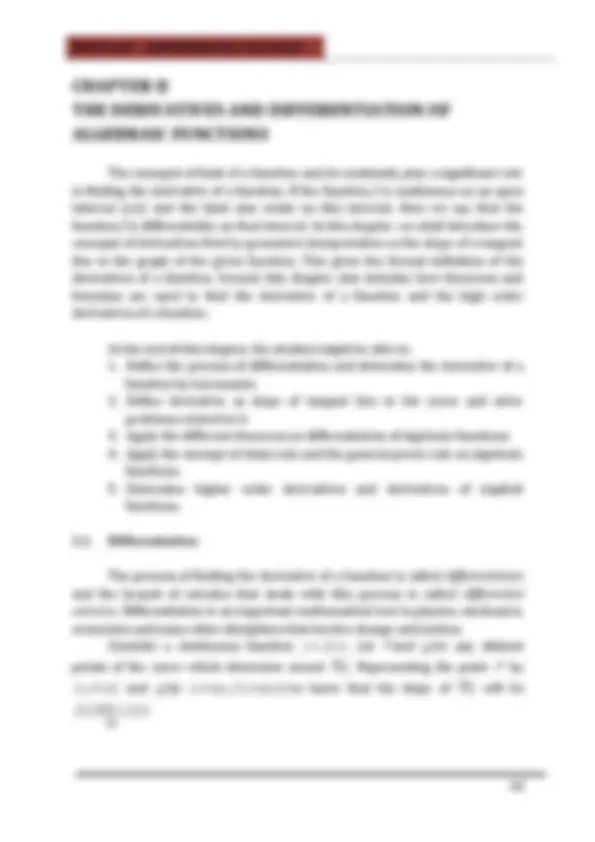
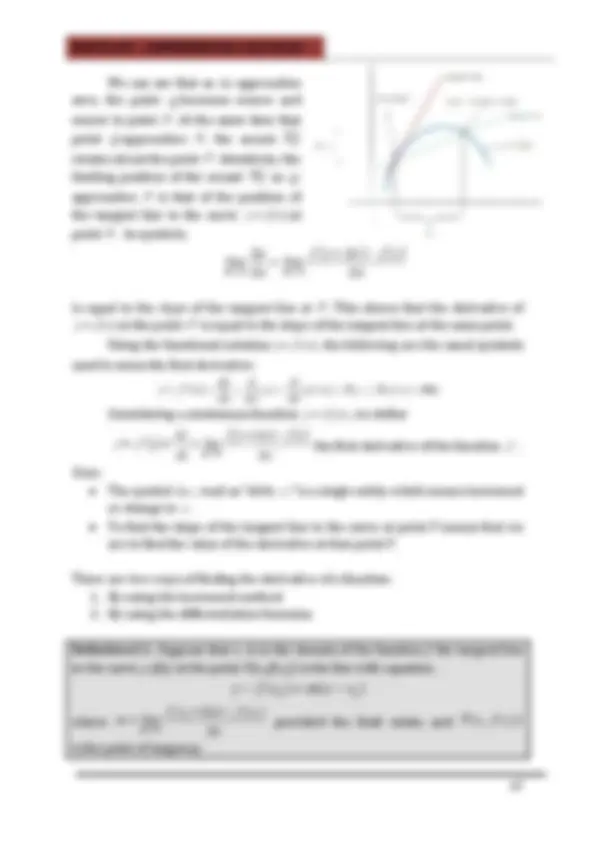
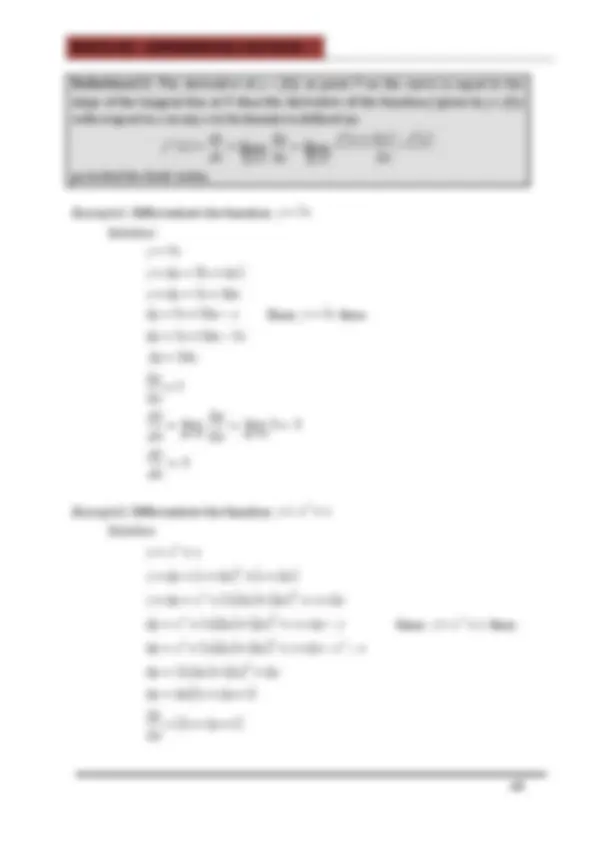
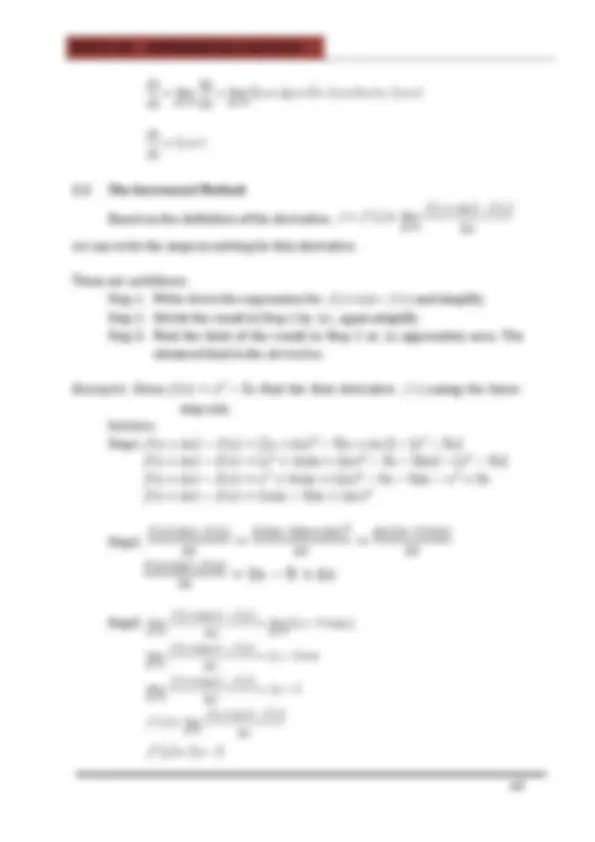
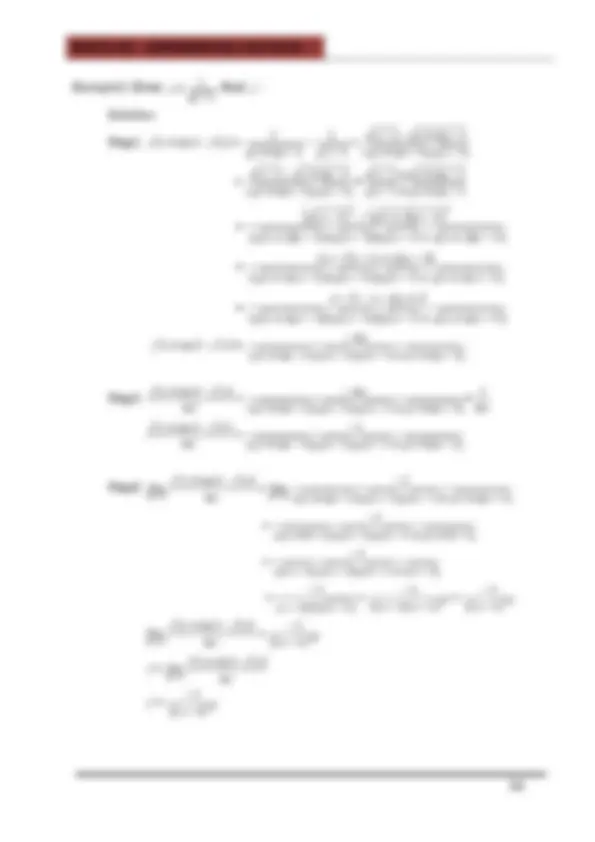
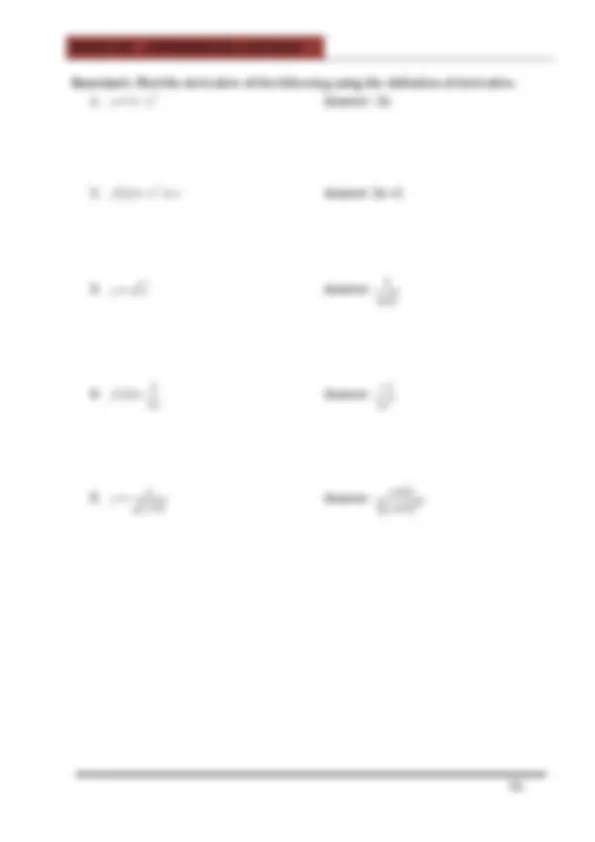
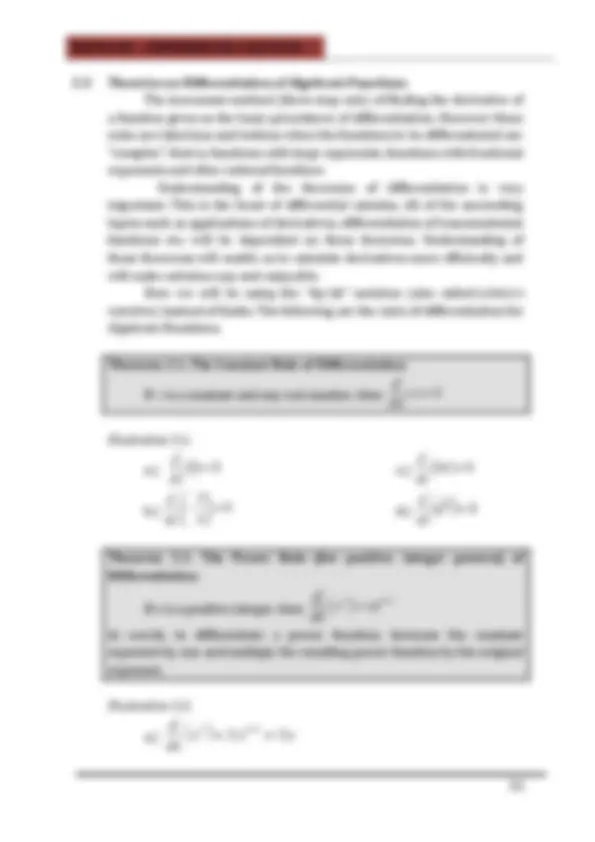

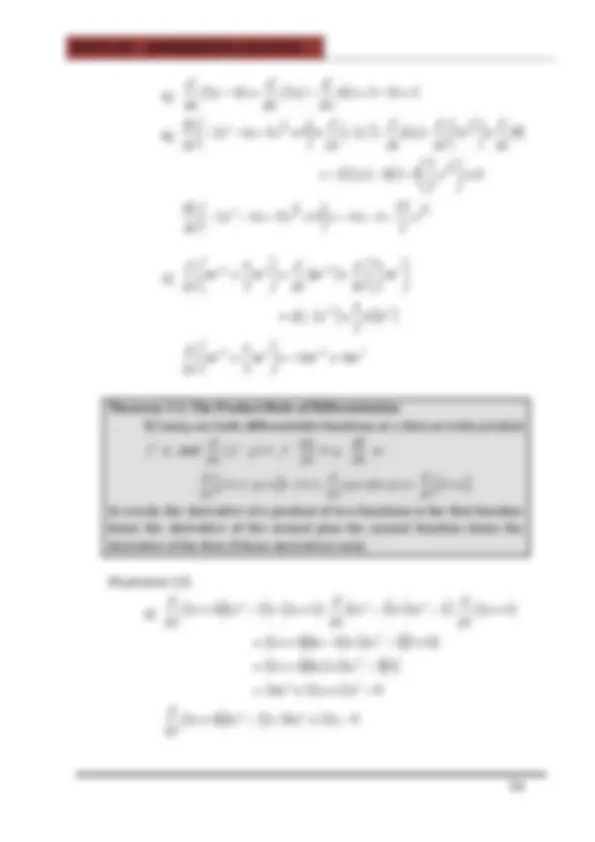
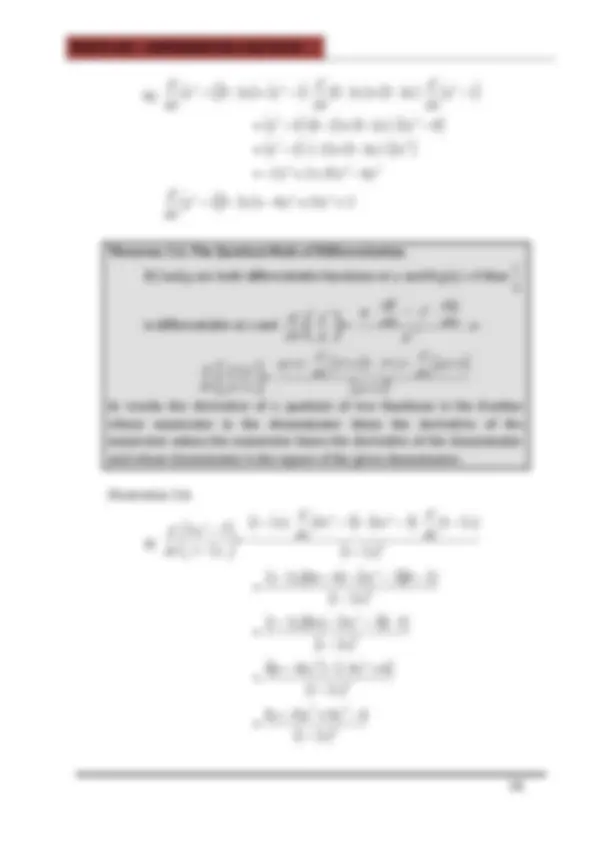
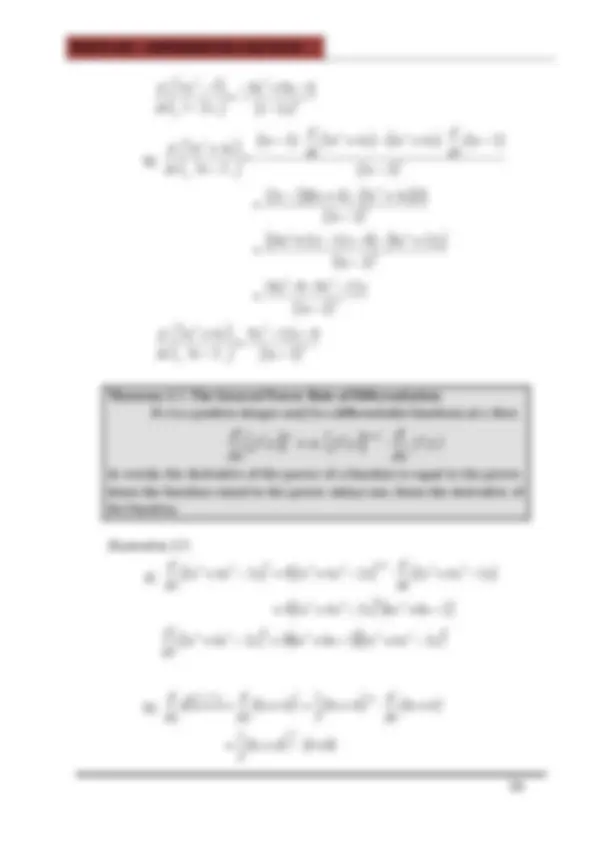
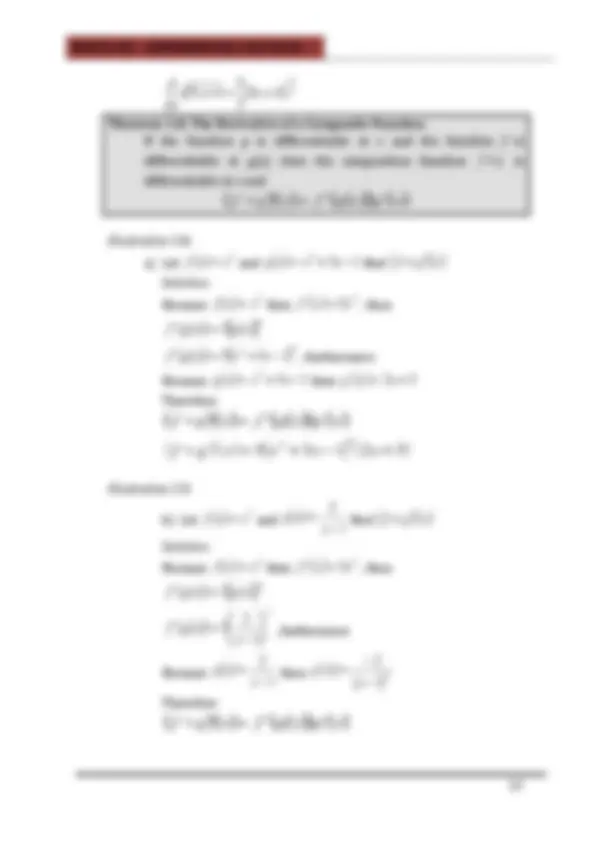
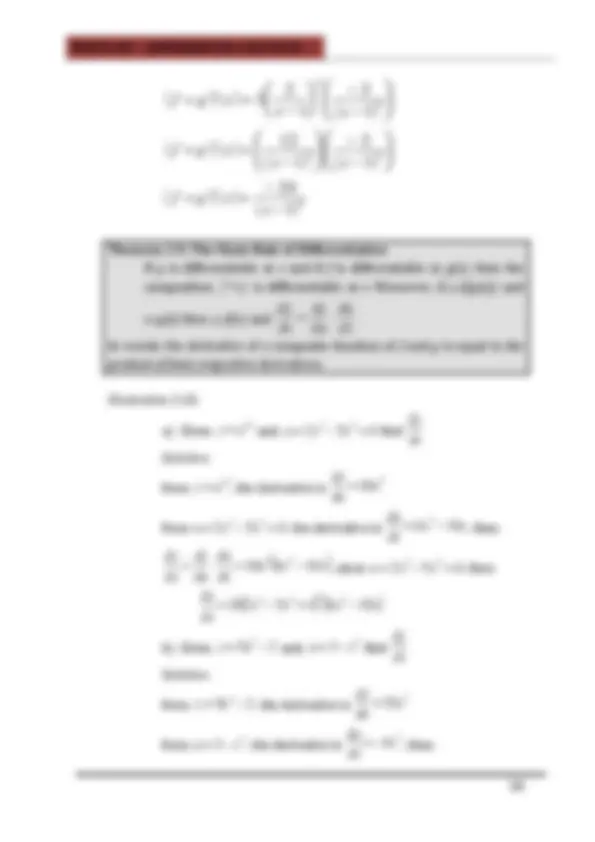
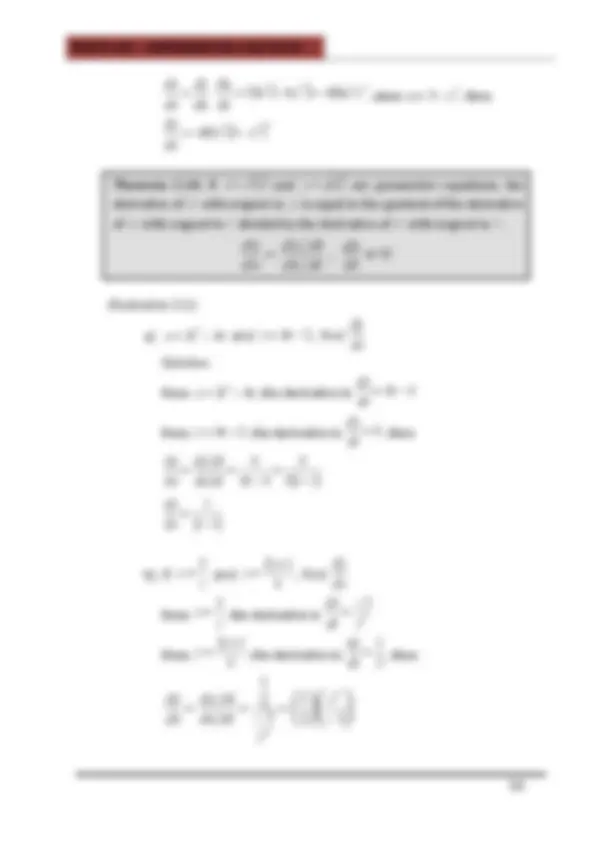
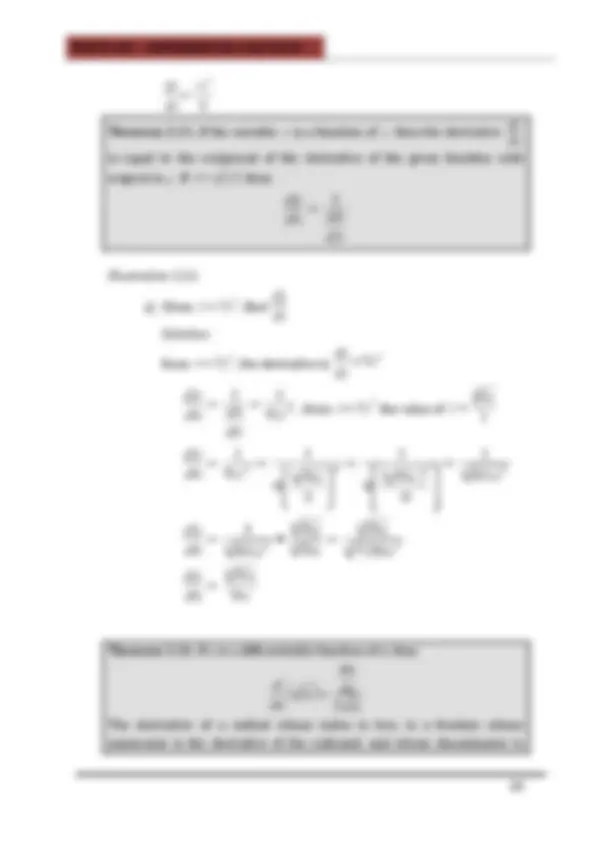
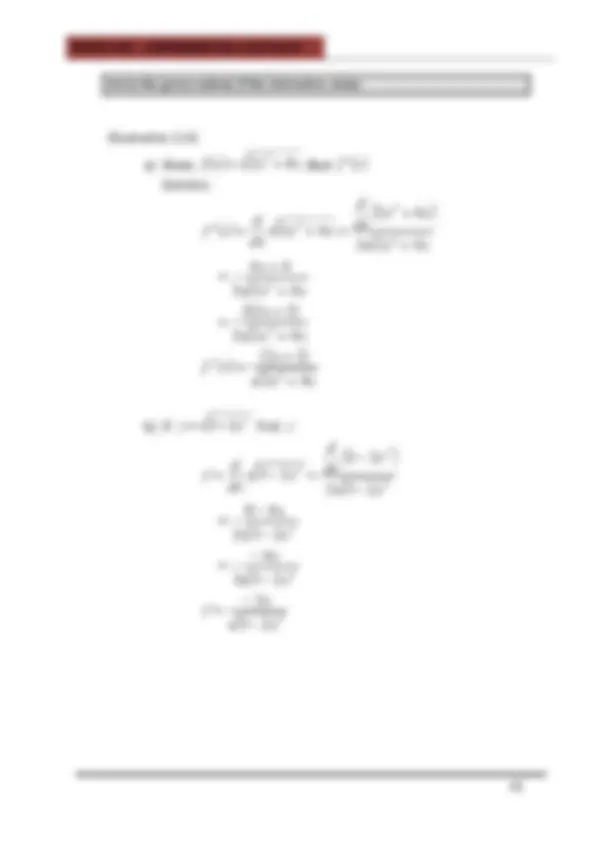
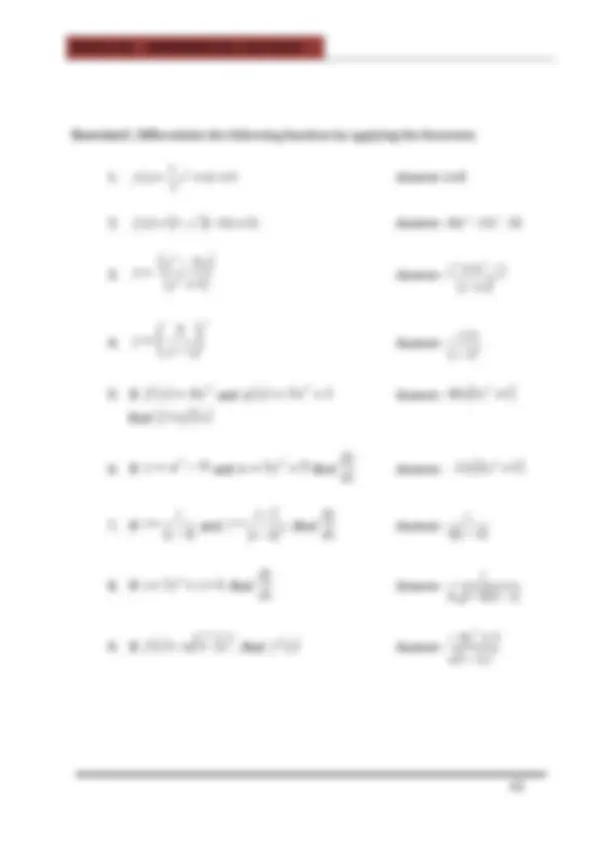
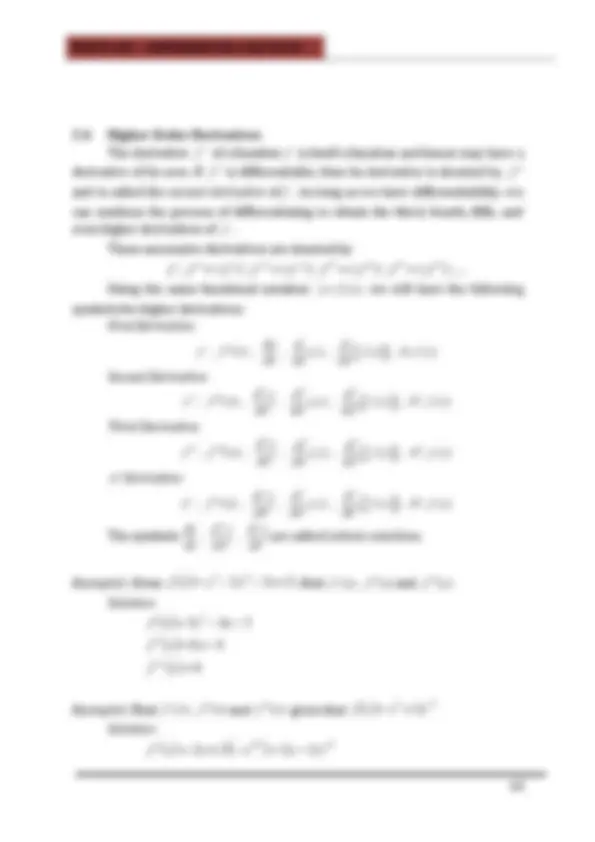
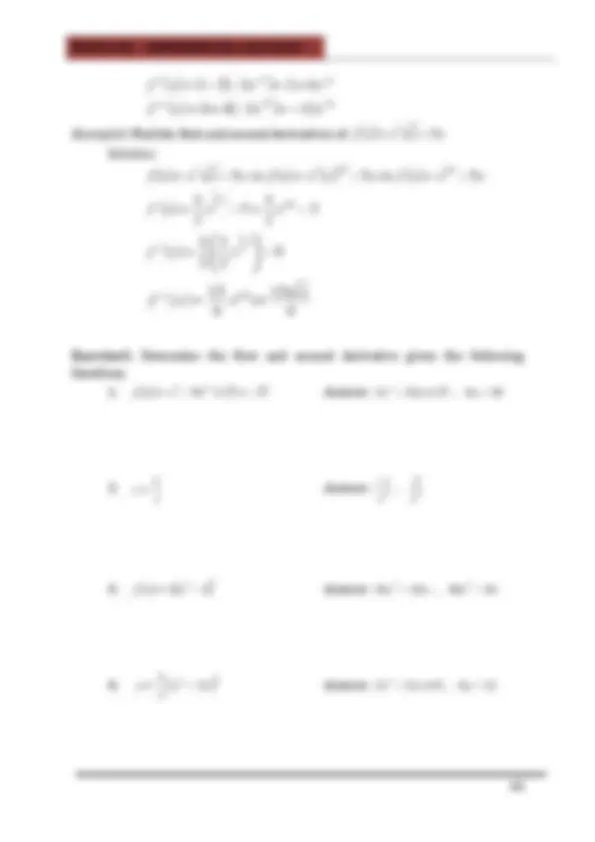
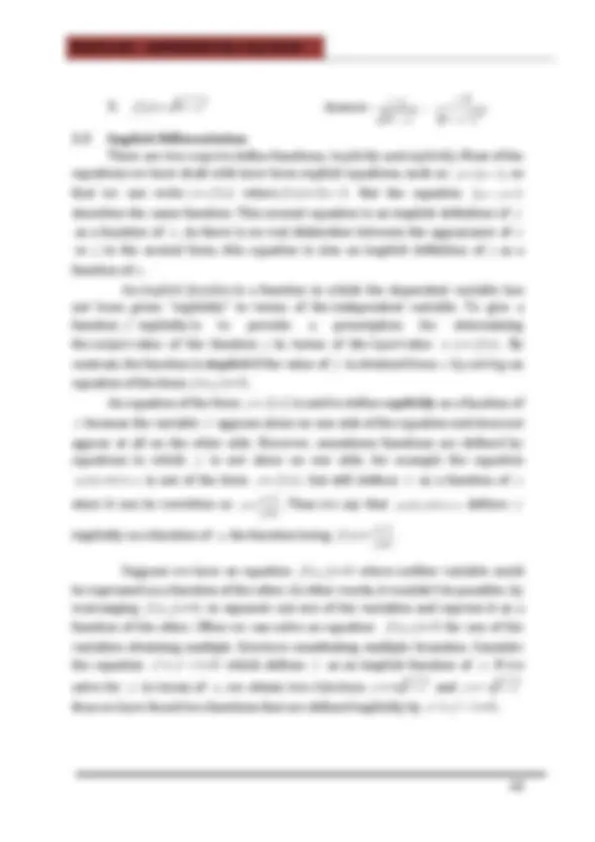
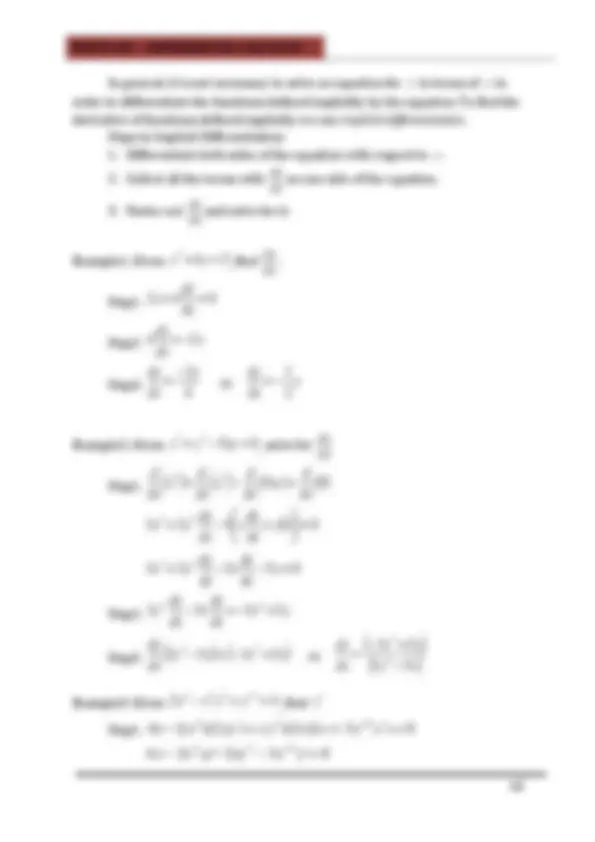
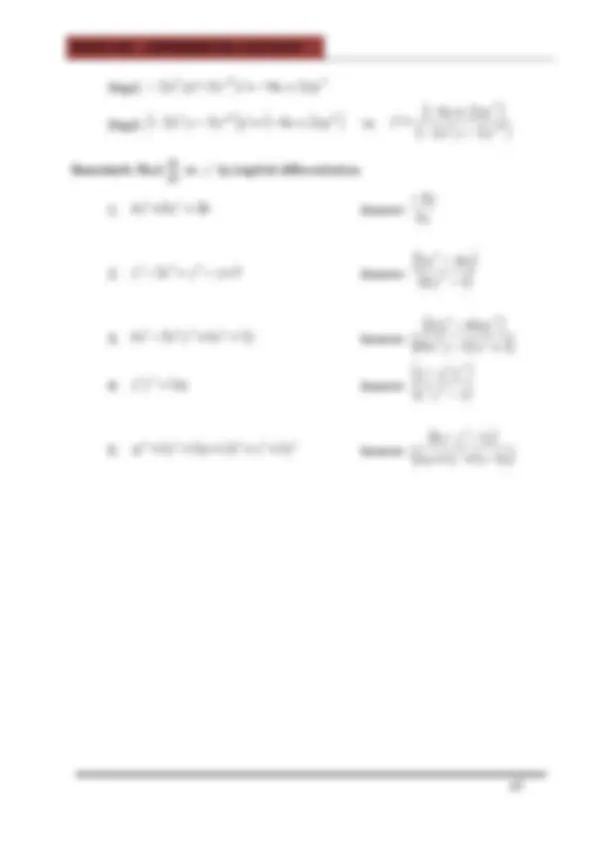
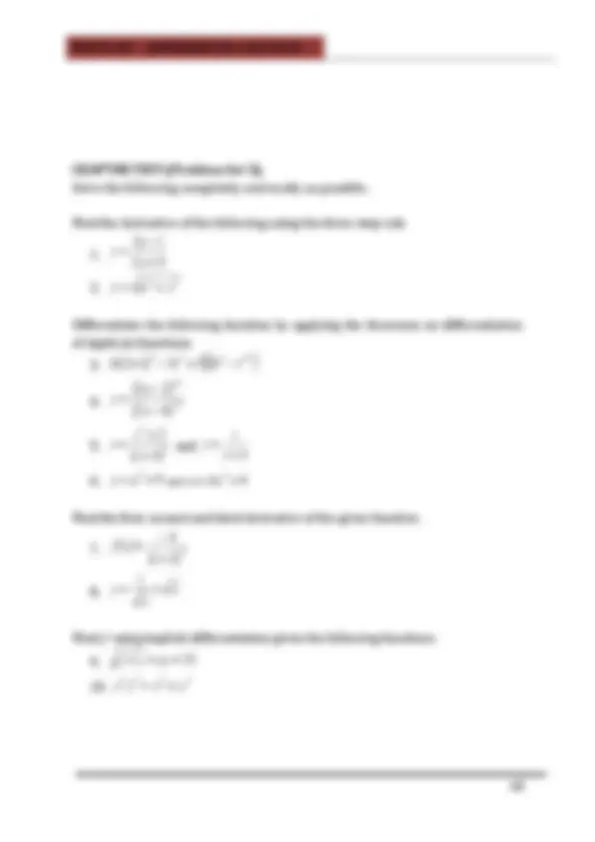
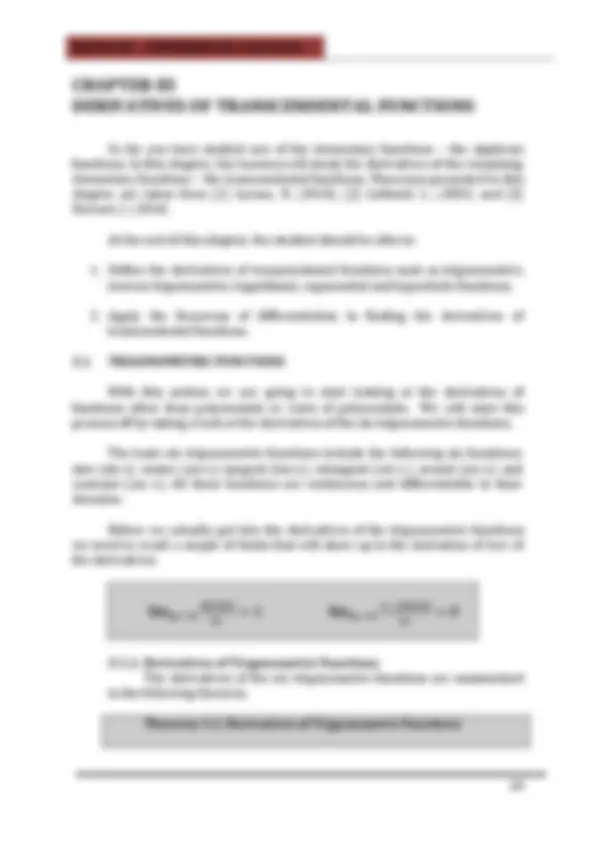
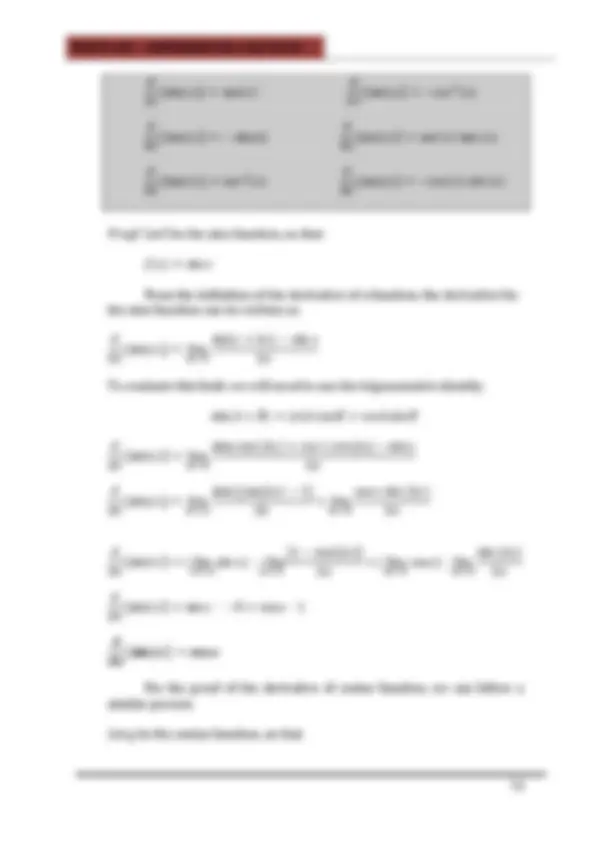
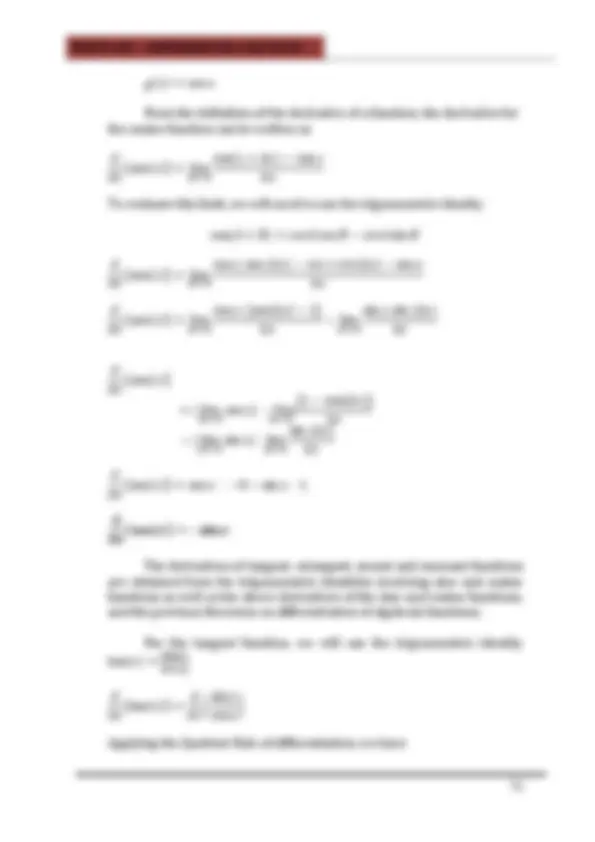
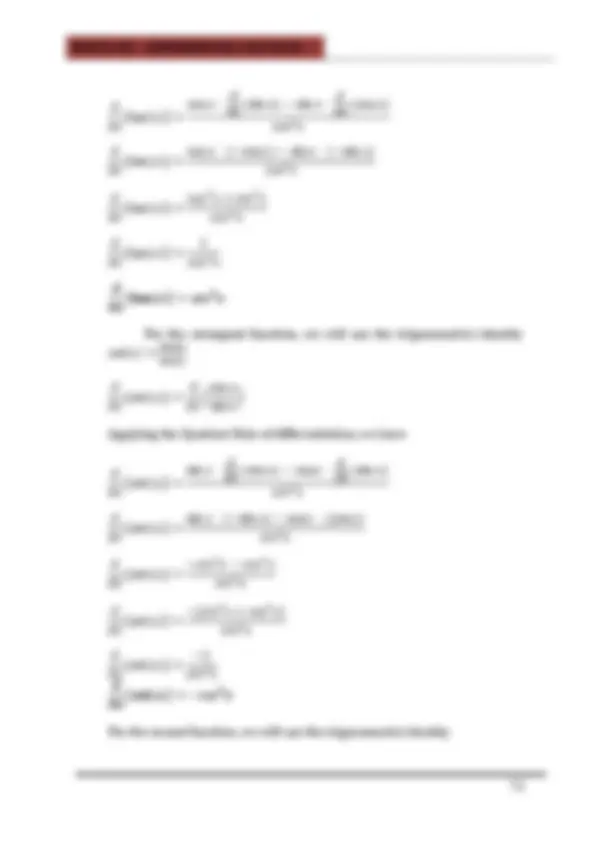
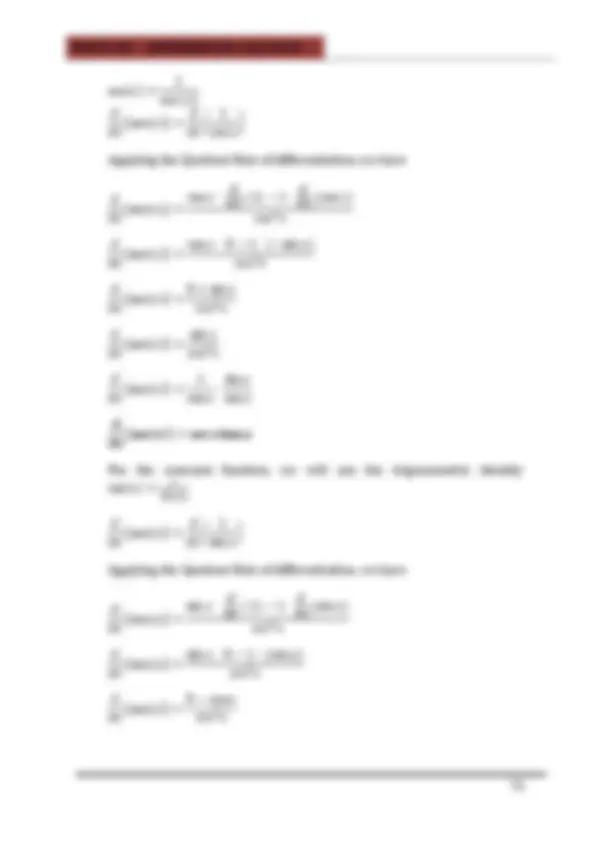
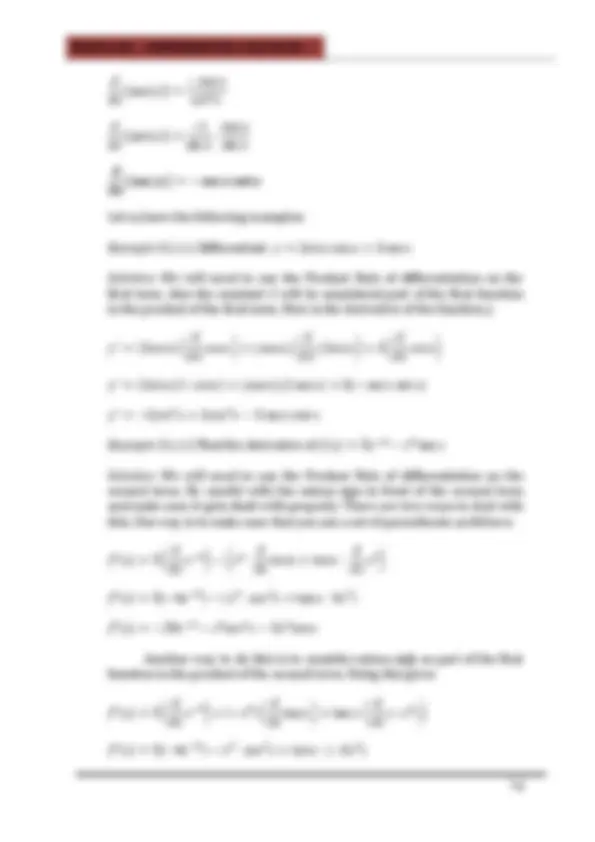
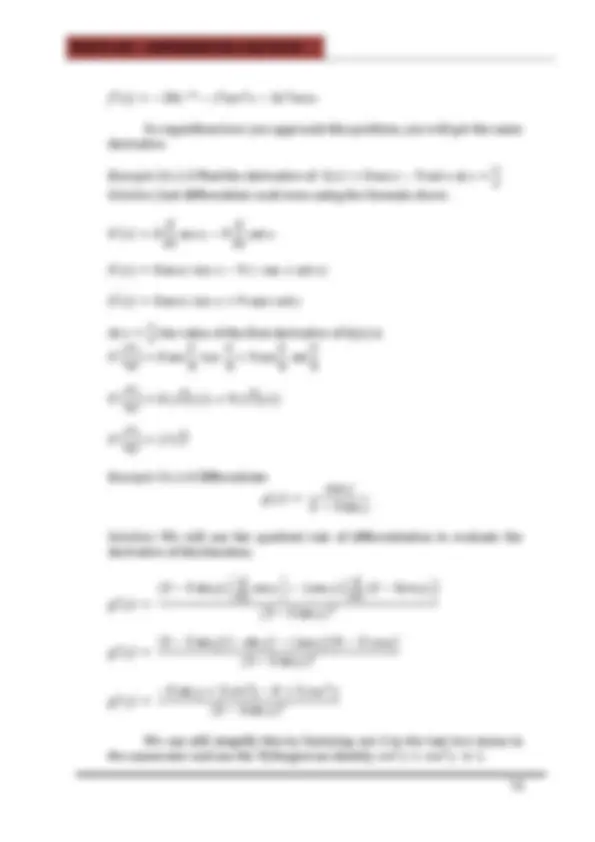
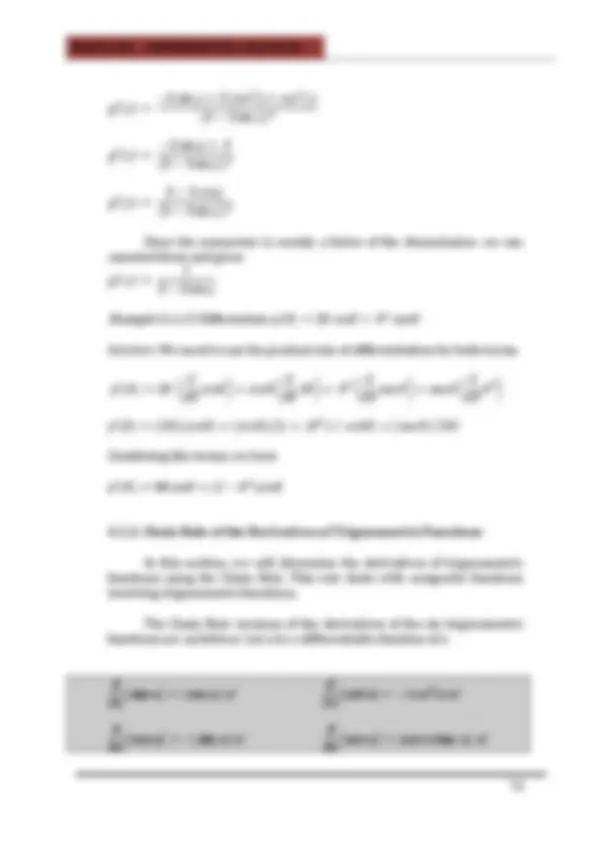
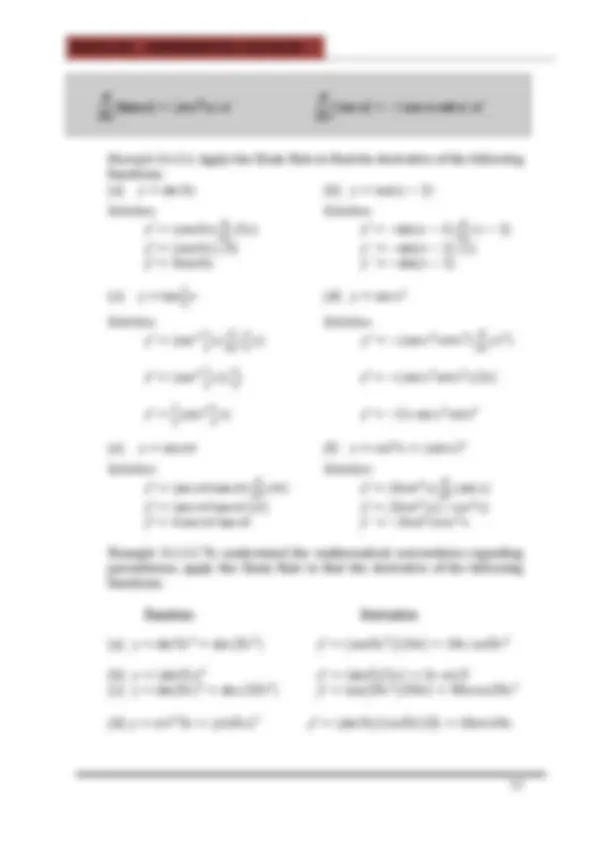
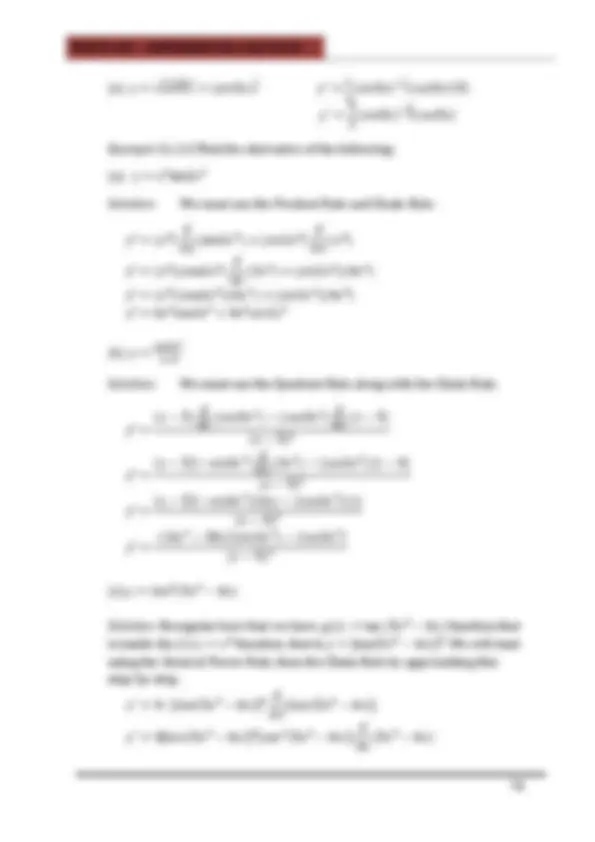
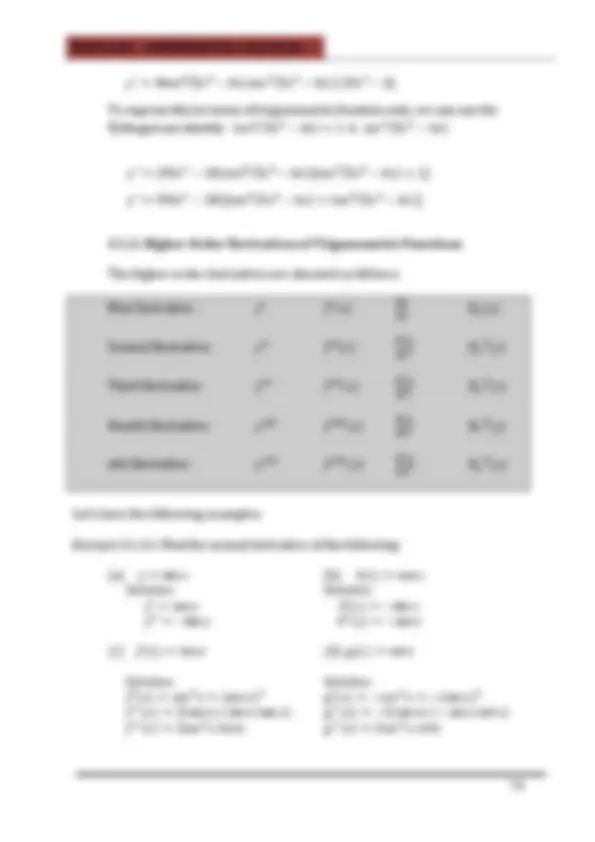
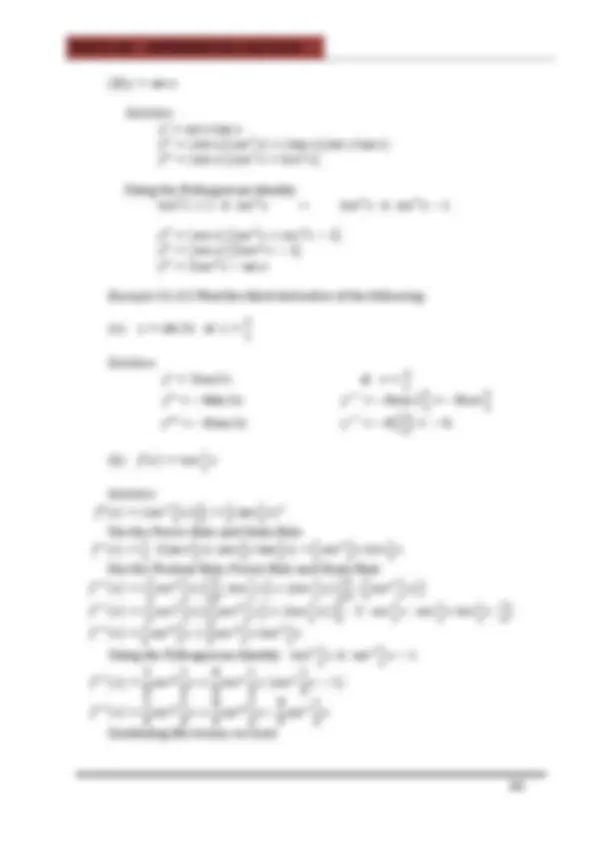
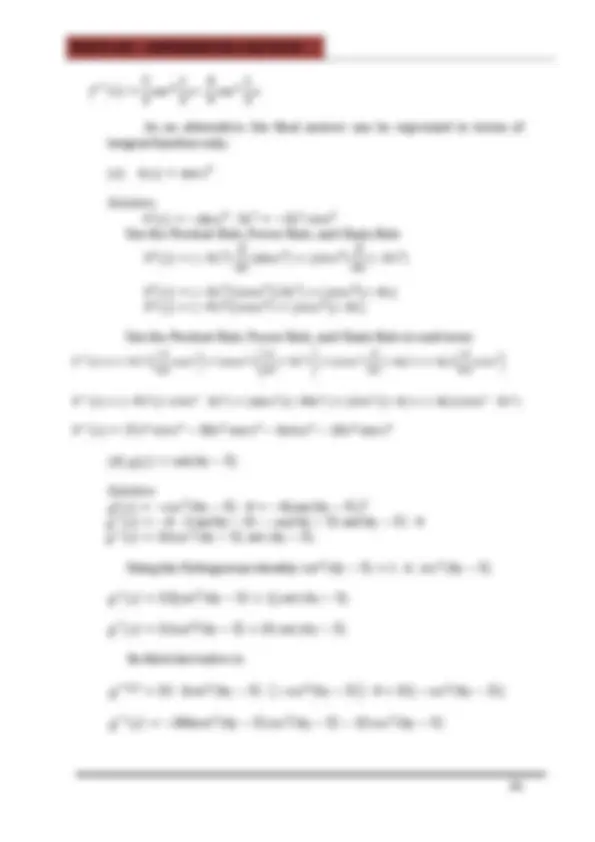
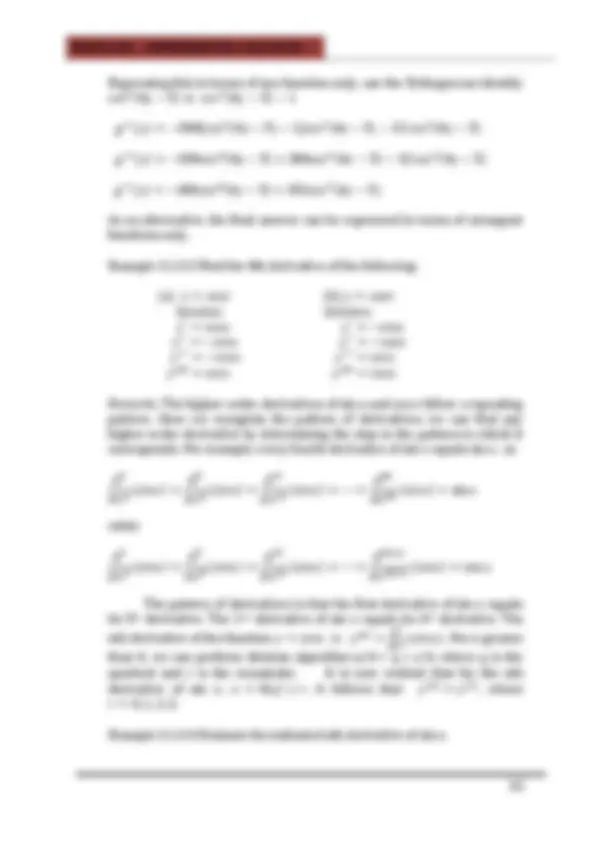
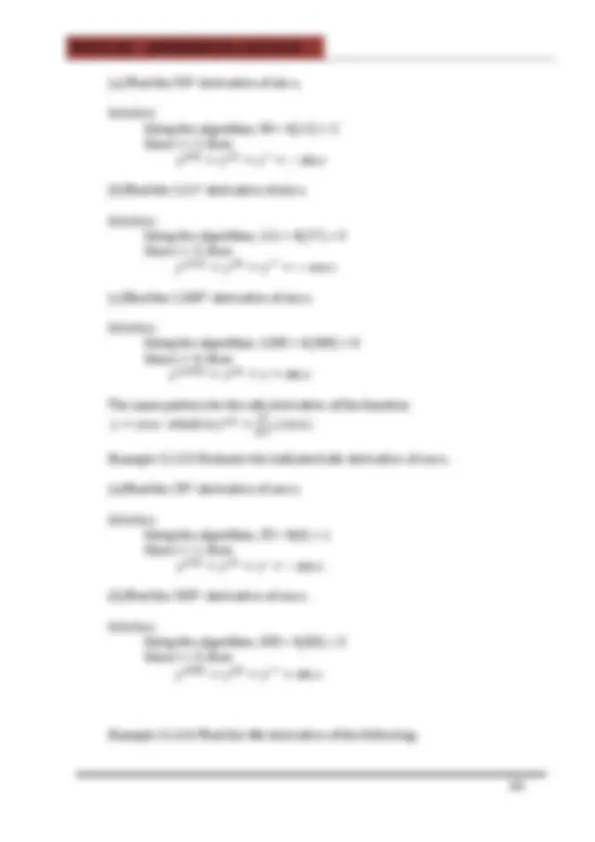
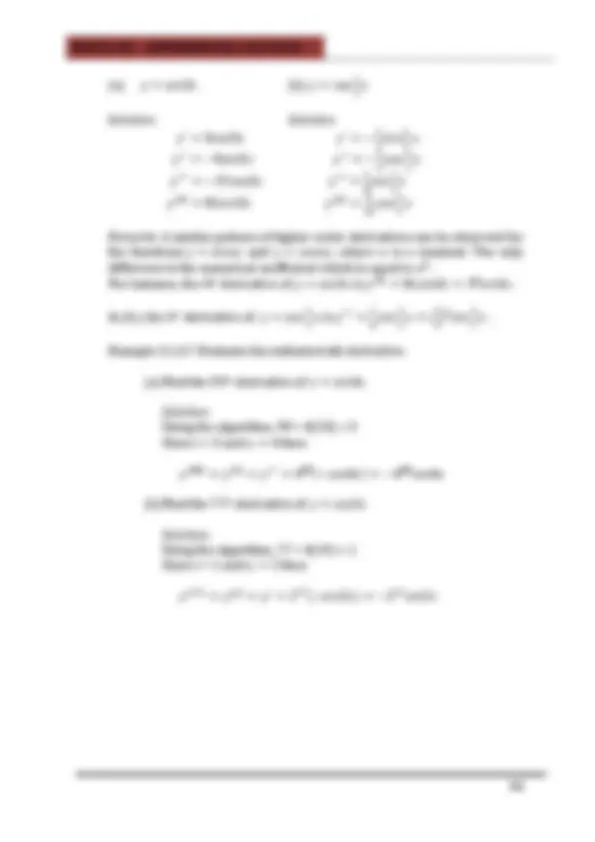
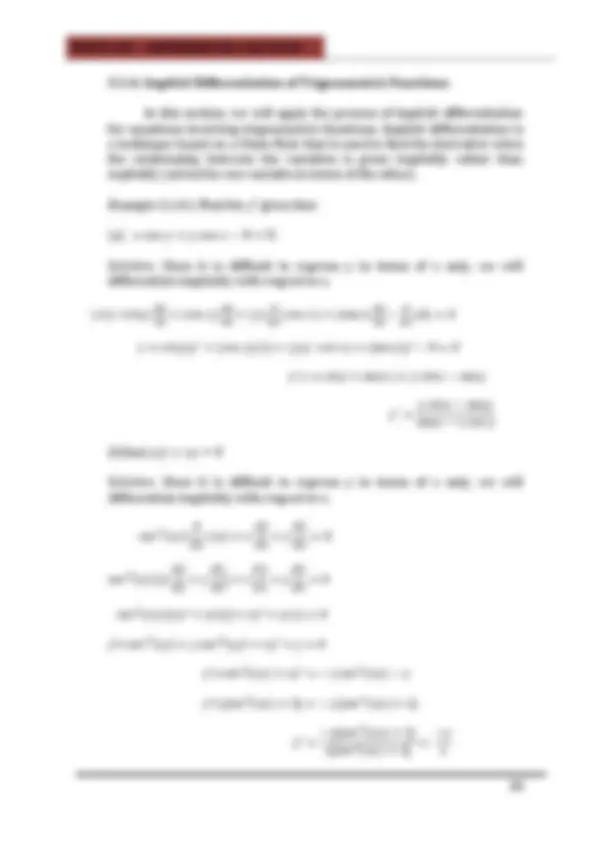
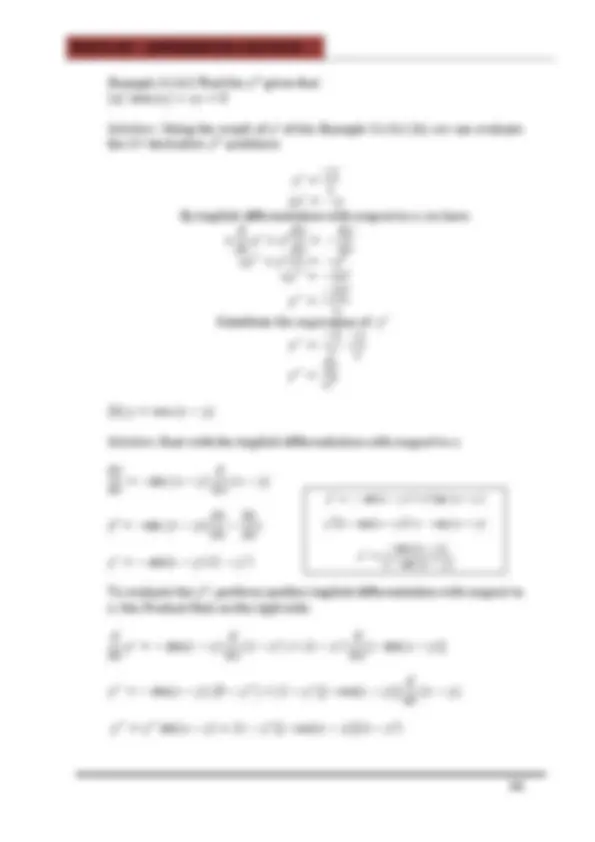
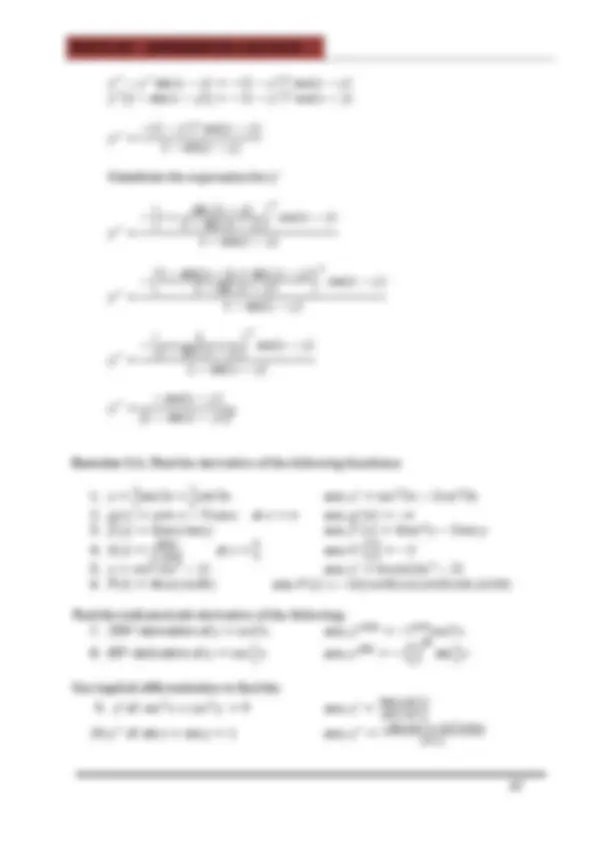
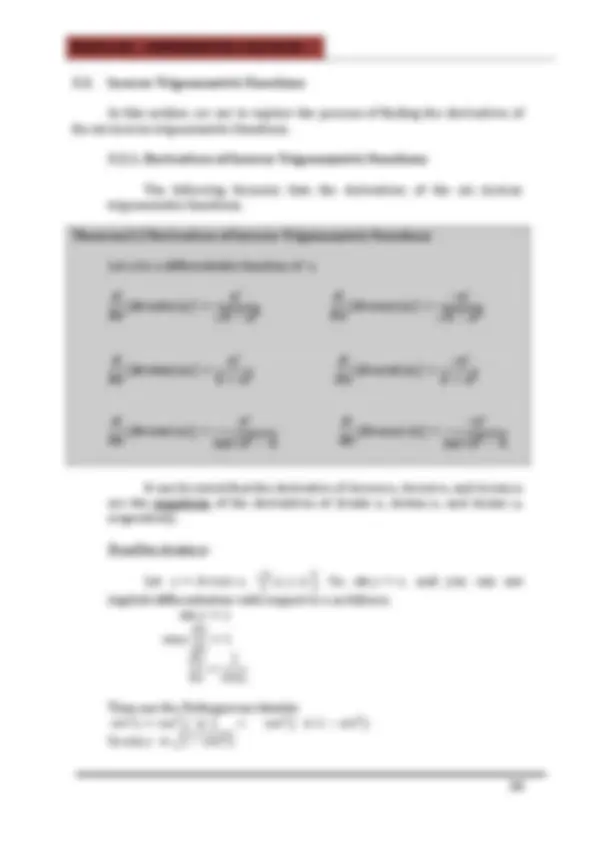
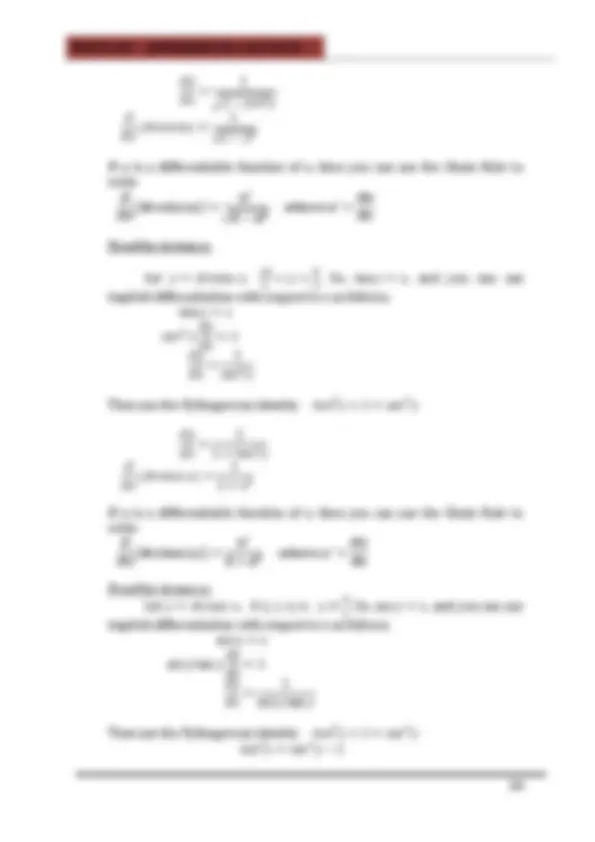
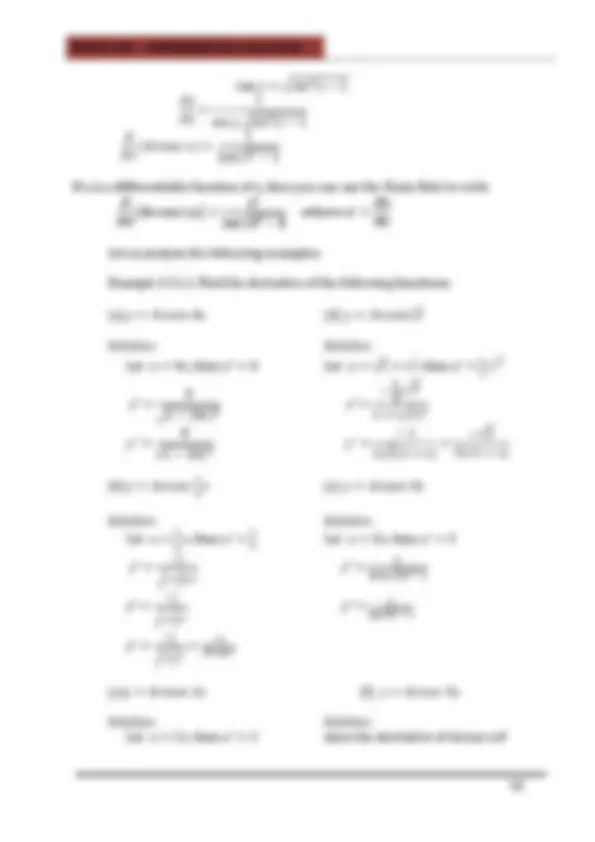
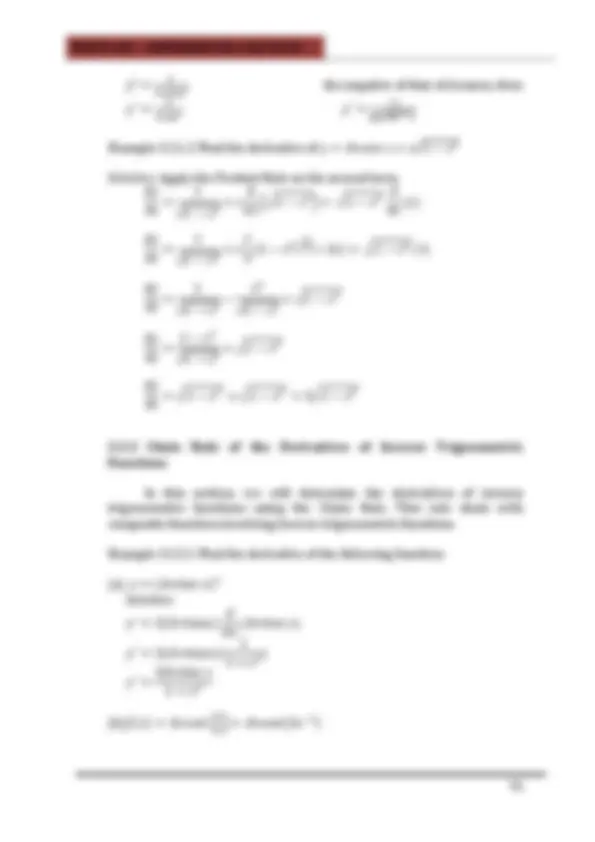
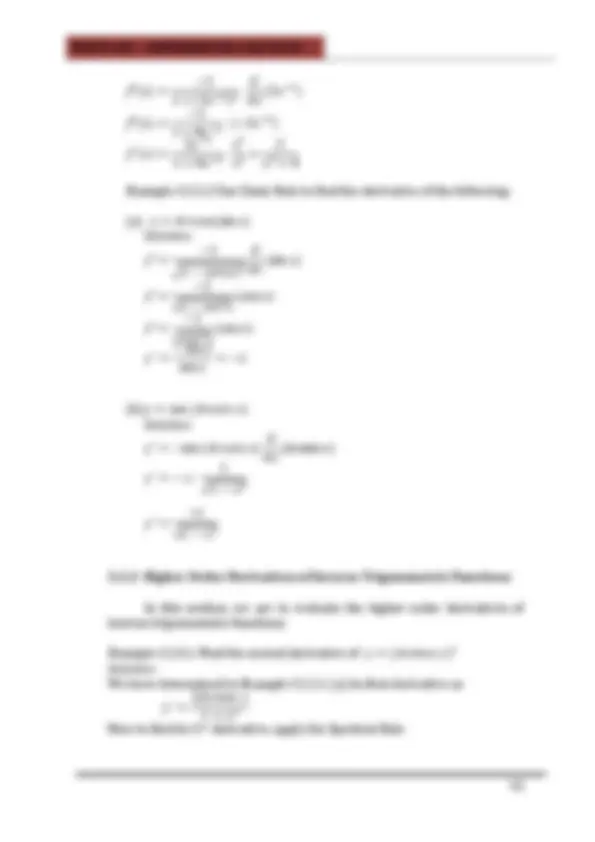
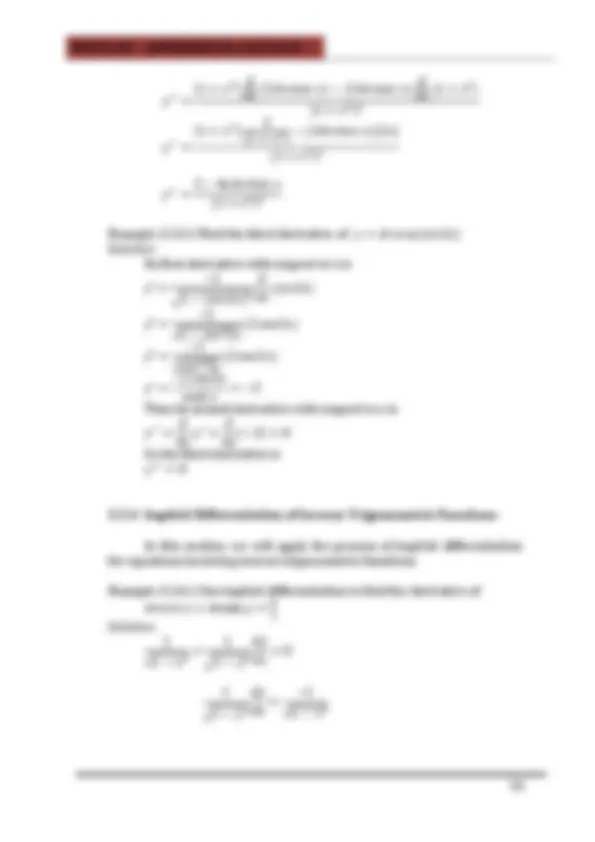
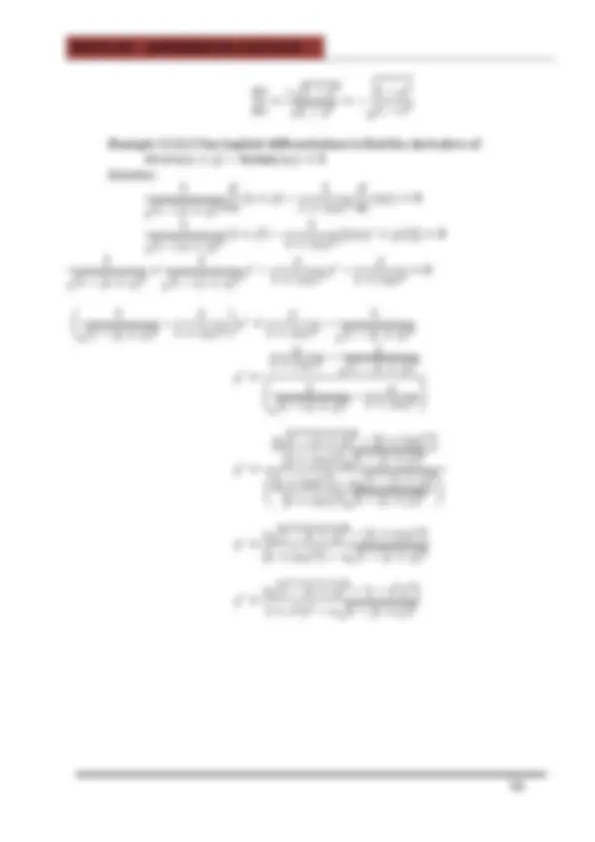
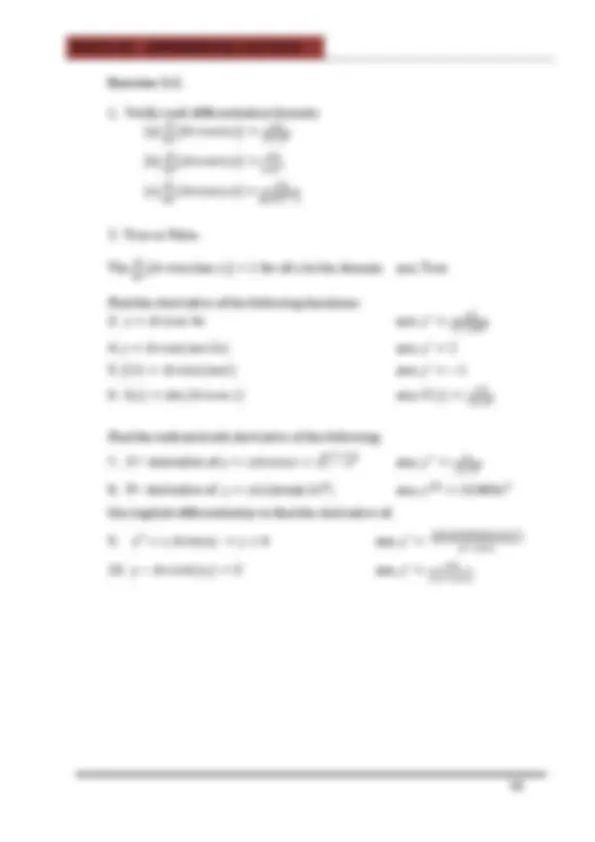
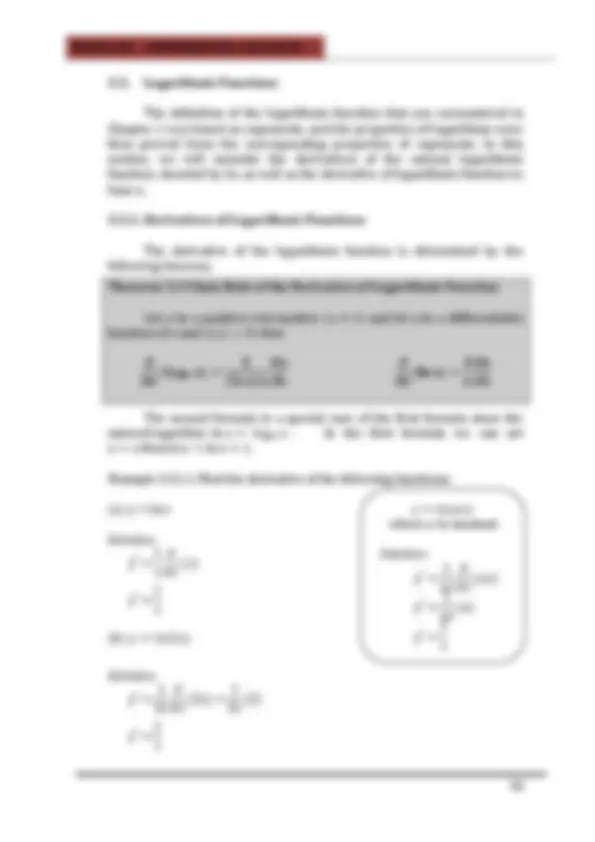
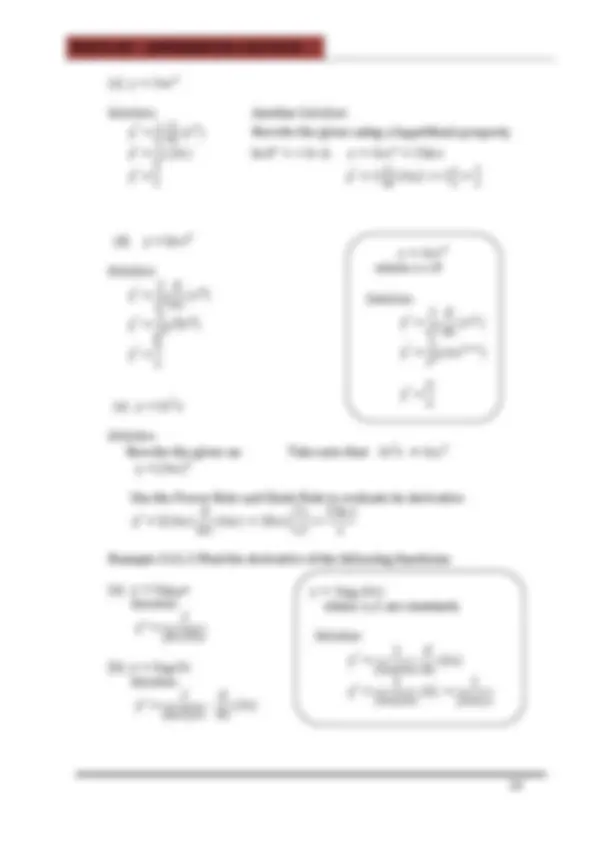
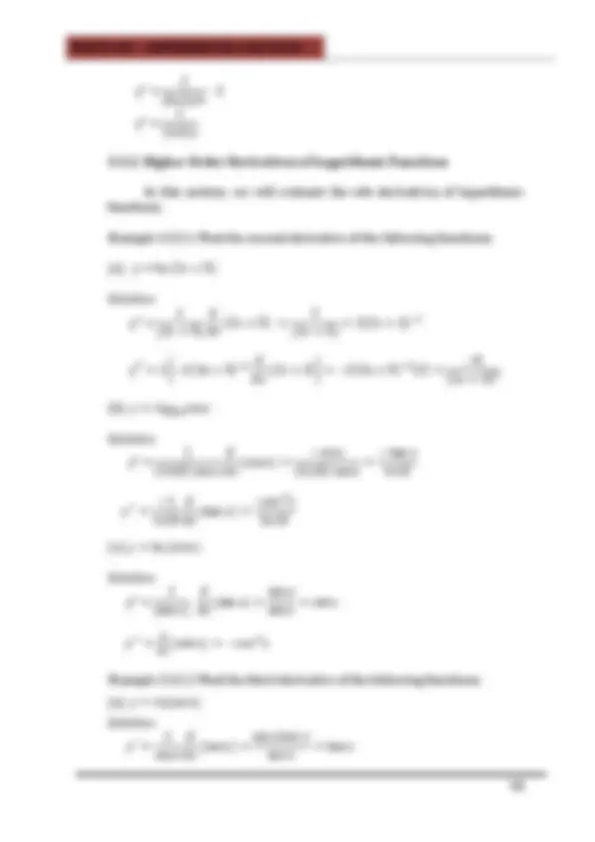


Study with the several resources on Docsity

Earn points by helping other students or get them with a premium plan


Prepare for your exams
Study with the several resources on Docsity

Earn points to download
Earn points by helping other students or get them with a premium plan
Community
Ask the community for help and clear up your study doubts
Discover the best universities in your country according to Docsity users
Free resources
Download our free guides on studying techniques, anxiety management strategies, and thesis advice from Docsity tutors
The fundamental concepts of differential calculus, including the definition of the derivative, the increment method, and the differentiation of various functions. It covers topics such as finding the slope of a tangent line, the equation of a tangent line and normal line, and the differentiation of functions with multiple variables. Detailed examples and step-by-step solutions to demonstrate the application of these concepts. It serves as a comprehensive resource for students studying differential calculus, covering topics such as limits, continuity, and the properties of derivatives. Likely to be useful for university-level mathematics courses, particularly those focused on differential calculus and its applications.
Typology: Summaries
1 / 245

This page cannot be seen from the preview
Don't miss anything!





























































































Table of Contents
iii CHAPTER IV Applications of Derivatives of Algebraic and
Symbols such as f , g , and h are used to denote functions unless stated
radius of the given circle. Here, it can be observed that the area, A is expressed as a function of r and the value of A depends on the value of r. So, we say that A is the dependent variable and r is the independent variable.
obtained.
obtained from the given circle. Observe that 1 is assigned to two values of y ,
that is 2 2.
Figure 1.1. The circle x^2 y^2 9
appear similar in the table, g can still be thought as a function since no two or
The relations presented in Example 1.1, 1.2 and 1.3 can be illustrated by
Figure 1.2 shows the mapping of the domain to the range of the given relations in Example 1.1, 1.2 and 1.3. Figure 1.2 ( a ) shows a one–to–one mapping
and 1 mapped to two values of y , i.e. -3 and 3; and 2 2 and 2 2 , respectively.
Figure 1.2. Mapping of a f x 2 x 1 , b x^2 y^2 9 and c g x x^2 1
Based on the examples presented in Figure 1.2 and Definition 1.1, a function possesses a one–to–one correspondence (bijection) and many–to–one correspondence (surjection) but not one–to–many or many–to–many.
Another way to determine whether a relation is function or not is by using the vertical line test. Given the graph of a function, draw vertical lines overlaying the graph. If the vertical lines pass through exactly one point on the graph, then it is a function. If it passes through two or more points, then it is not a function.
To evaluate function, a straight forward substitution is used. For instance,
2
f^1 ;
Solution :
Domain
Range
Domain
Range y
0 1
3
2 2
0
2 2
3
1
2
5
10
Domain
Range
Example 1.7. Let f be a function defined by f x x 3. Here, x 3 cannot be a negative number, so we can let x 3 0. Solving this inequality, we have (^) x 3. So, the domain of this function is the set of all numbers
involves square root, then x^2 9 0. Here, we shall think of any number
the cube root of any negative number is defined on the set of negative real number, the cube root of 0 is 0 and the cube root of a positive real number is still defined on the same set of positive real numbers. Therefore, the
From this example, we can conclude that for any function f defined
Example 1.10. Find the domain and range of the following functions:
x
f x ^2
x
gx x
x
f x
f x (^) x (^2)
Solution:
x
f x ^1 is the set of real numbers except 0 or
constant.
x
gx x , the denominator x 2 should be equal to 0, i.e. x 2
. The domain of g is the set of real numbers except -2 or
numerator is constant, 1 and the denominator is (^) x^2. Given this facts,
f x (^) x (^2) is the set of real numbers except 4
^
(^) 0 , 16
Exercise 1.1. Find the domain and range of the following functions.
y 2 x
x
gx x
x
g x x
2 25
x
f x x
x y (^)
To facilitate the graphing of a function, the following steps are suggested:
Example 1.13. Sketch the graph of the following functions: a. f x 2 x 3
x
f x
x
f x
Solution :
a. b.
From Figure 1.4 it can be observed that the graph of f x 2 x 3 is a
, 0 2
x intercept and the point
, 0 2
3 is the y intercept of f x 2 x 3. We
can also verify that the domain and range of this function is any number on
3 , and the range is 0 ,. Also, it can be seen from Figure1.5 that as x increases, y also increases.
Figure1. 10. Graph of f x 2 x
c. d.
f x x^2 4 in Figure 1.7 confirms that the domain of this function is , 2 2 ,^ and the range is^ 0 ,.
e. f.
g.
,^1. Finally, it can be seen from Figure 1.12 that domain of
x
f x x is
The lines x 5 and x 5 in Figure 1.11 and the lines x 4 and x 4 are called^ vertical asymptotes ; while the lines^ y 2 in Figure 1.
and y 0 in Figure 1.12 are called horizontal asymptotes. The asymptotes
of functions determine its discontinuity. For instance in the function
f 4 ^1 and
gets arbitrarily large or approaching . Similarly, as (^) x approaches 4
asymptotes.
From this definition, we set the rules to determine the asymptote of a function. Suppose that the rational function
1 1 1 0 ...
b x b x bx b
a x a x ax a qx
f x px m m
m m
n n n n
where q x 0
is in lowest terms.
If (^) n m , then the horizontal asymptote is the line m
n b
a (^) y .
f x px is a rational
function in lowest terms and a is some real number where q x 0
i. The vertical line (^) x a is a vertical asymptote of the graph of f if
ii. The horizontal line y a is a horizontal asymptote of the graph
x
f x x in Figure 1.12, observe that the f is
undefined at (^) x 3 , i.e., when (^) x is replaced by -3, the denominator becomes 0. However, based on Definition 1.4, the rational function should
1.1.3. Types of Functions
In the study of Calculus we might encounter different forms of functions. Generally speaking functions can be classified into two such as algebraic functions and transcendental functions. Some forms of
functions of the forms q x
f x px where q x 0
(a) (b) (c) (d)
Figure 1.13. Some examples of (a) linear function; (b) quadratic function; (c) polynomial function, and (d) rational function
Transcendental functions are functions that transcend algebraic functions.
For instance, ... 1! 2! 3!
2 3 x x x transcends ex ; ... 3! 5! 7!
sin
3 5 7 x x x x x
and ... 2! 4! 6!
cos 1
2 4 6 x x x x . Some commonly used transcendental
functions are:
The domain and range of the trigonometric functions are:
Table Domain and Range of Trigonometric Functions Domain Range
tan
(^) x x n 2
where n Z ,
sec
(^) x x n 2
Some trigonometric identities are as follows:
x
x x
x x
x x
x
x x
x x x
x
x
x x x
x x
x x
x x
x x
x x
x x
x x
x x
1 cos 2
tan^1 cos^2
2
cos^1 cos^2
2
sin^1 cos^2
1 tan
tan 2 2 tan
sin 2 2 sin cos
2 cos 1
1 2 sin
cos sin cos 2
1 cot csc
1 tan sec
sin cos 1
tan cot 1
cos sec 1
sin csc 1
sin sin
cos cos
2
2
2
2
2
2
2 2
2 2
2 2
2 2
x y x y x y
x y x y x y
x y x y x y
x y x y x y
x y x y x y
x y x y x y
x y x y x y
x y
x y x y
x y
x y x y
x y x y x y
x y x y x y
x y x y x y
x y x y x y
2
sin^1 2
cos cos 2 sin^1
2
cos^1 2
cos cos 2 cos^1
2
sin^1 2
sin sin 2 cos^1
2
cos^1 2
sin sin 2 sin^1
cos 2
cos^1 2
cos cos^1
sin 2
sin^1 2
sin cos^1
cos 2
cos^1 2
sin sin^1
1 tan tan
tan tan tan
1 tan tan
tan tan tan
sin sin cos cos sin
sin sin cos cos sin
cos cos cos sin sin
cos cos cos sin sin
These identities will help students to simplify both trigonometric expressions and equations.
Let us consider the sine function r
sin y. If 2 2
^ , we see from
exactly once and so is one–to–one. For the cosine function, if we restrict
the value of inclusively between 0 and 2 2
^ for tangent
function, these gives cosine and tangent a one–t – one correspondence. On these intervals, we obtain their inverse functions as follows:
x y
x y
x y
1
1
1
tan
cos
sin
y x
y x
y x
tan
cos
sin
Table Domain and Range of the Inverse Trigonometric Functions Domain Range
(^) 2
, 2
tan^1 x^ all real numbers
(^) 2
, 2
Exponential and Logarithmic Functions
A function y defined by the relation, y ax where a is a positive number except 1 is called an exponential function of x.
Example 1.15. Sketch the graph of (a) f x 2 x and (b)
x f x
2
1
Solution : The graphs of f x 2 x and
x f x
2
1 are shown in Figure 1.18.
Figure 1.1 6. Graphs of (a) y sin^1 x , (b) y cos^1 x and (c) y tan^1 x Reference: https://www.onlinemathlearning.com/inverse-sine-cosine-tangent.html
(a) y sin^1 x (b) y cos^1 x (c) y tan^1 x
Figure 1.21. Graph of f x log ax where a 1
Figure 1.22. Graph of f x log ax where 0 a 1
Logarithmic Functions
By definition of logarithm, the relation y ax , can be written as x log ay. Thus ax and log ax are inverse functions of one another, and it follows that a log a^ x x and log a a x x.
Example 1.16. Convert the following exponential to logarithmic functions
23 8 Ans. log 2 8 3
5
1 5
(^1) ^1
1 5
log^1 5
1
100 1 log 10 1 0
27
3 ^3 ^13 27
log 1 3
27
1 3
(^1) ^3
3 27
log^1 27
1
The logarithmic function takes a special when a e , that is called natural logarithm, given by log (^) e x ln x and when a 10 , called common logarithm and is written as log 10 x log x.
Properties of Logarithmic Function
For f x log ax where a 1
For f x log ax where 0 a 1
Some laws on logarithmic functions are as follows:
r x xr
x y y
x
xy x y
e
ln ln
ln ln ln
ln ln ln
ln 1
ln 1 0
a a r
a a a
a a a
a
a
r x x
x y y
x
xy x y
a
log log
log log log
log log log
log 1
log 1 0
Hyperbolic Functions
Hyperbolic functions are functions possessing similar characteristics with that of the six trigonometric functions derived from its relation to the equilateral hyperbola. The hyperbolic functions are defined as follows:
2
sinh ex^ e^ x x ^ x x e e
hx (^)
csc (^2) x x
x x e e
x e e
tanh
2
cosh ex^ e^ x x ^ x x e e
hx (^)
sec (^2) x x
x x e e
x e e
coth
Some properties and identities of hyperbolic functions and their domain and range are presented in Table 3 while their graphs are on Figure 1.23.
x
x x x e
x x e
x h x
x h x
x x
^
cosh sinh
cosh sinh
coth csc 1
tanh sec 1
cosh sinh 1
2 2
2 2
2 2
x x x
x x x
x y x y x y
x y x y x y
cosh 2 cosh^2 sinh^2
sinh 2 2 sinh cosh
cosh( ) cosh cosh sinh sinh
sinh( ) sinh cosh cosh sinh
Table 3 Domain and Range of Hyperbolic Functions Domain Range
sinh x , , tanh x ^ ^ , ^1 ,^1
csc hx , 0 0 , , 0 0 , coth x , 0 0 , , 1 1 ,